SAFETY ISSUE
PSYCHOLOGICAL SCREENING FOR PATIENT SAFETY
PSYCHEDELICS — THE PROS, CONS AND UNKNOWNS BRIDGING THE RURAL-URBAN CARE DIVIDE

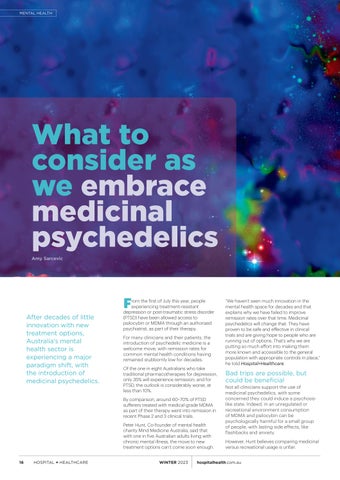
PSYCHOLOGICAL SCREENING FOR PATIENT SAFETY
PSYCHEDELICS — THE PROS, CONS AND UNKNOWNS BRIDGING THE RURAL-URBAN CARE DIVIDE














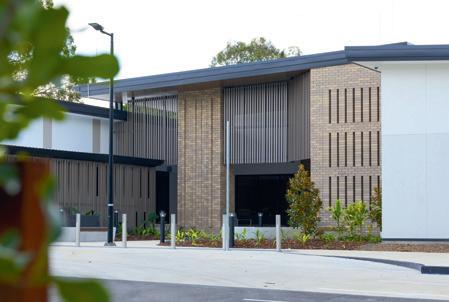










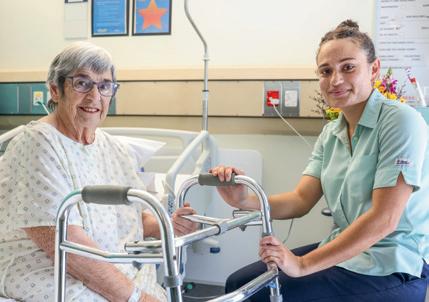










Flexibility is non-existent without connected data flows - and the need to do more with less is truer than ever. For today’s ORs to handle more and varied cases, leveraging three key data points will help you design a resilient OR workspace: equipment, staff, and instruments.
Getinge’s Digital Health Solutions do just that in a seamless solution configured to your facility’s exact needs:
Maximise resource utilisation and prioritise your schedule with intuitive digital planning.
Achieve a more streamlined OR workspace with video, device, and data integration.
Gain complete surgical asset traceability that promotes on-time instrument delivery for surgeries.
By connecting these traditionally siphoned data flows with intuitive digital solutions, you can focus on supporting better patient care and work conditions for your staff.

Editor: Mansi Gandhi hh@wfmedia.com.au

Contributing Editor: Amy Sarcevic
Acting Publishing Director/MD: Janice Williams
Art Director/Production Manager: Julie Wright
Art/Production: Linda Klobusiak, Marija Tutkovska
Circulation: Dianna Alberry, circulation@wfmedia.com.au
Copy Control: Mitchie Mullins copy@wfmedia.com.au
Advertising Manager: Kerrie Robinson +61 400 886 311 krobinson@wfmedia.com.au
PUBLISHED BY Westwick-Farrow Media
A.B.N. 22 152 305 336
Around 95% of health professionals in Australia experience occupational violence and aggression, according to a paper published in 2020. Any form of violence or aggression is damaging to the health staff as well as the communities they serve. Exposure to violence has been known to affect staff wellbeing, leading to a higher rate of burnout and stress.

www.wfmedia.com.au
Head Office
Unit 7, 6-8 Byfield Street, North Ryde Locked Bag 2226 North Ryde BC NSW 1670
AUSTRALIA
ph: +61 2 9168 2500
If you have any queries regarding our privacy policy please email privacy@wfmedia.com.au
Subscriptions for unregistered readersprice on application
In this issue’s lead article, Jonathan Mamaril, Director, NB Employment Law, details what the legislation that requires every Australian business — including hospitals and every workplace manager — to eliminate tasks that could trigger work-related stress means for hospital and healthcare bosses. He details what hospitals must be doing legally to help eliminate stress and minimise the likelihood of burnout.

As you may already be aware, authorised psychiatrists can now prescribe MDMA for post-traumatic stress disorder and psilocybin for treatment-resistant depression. Peter Hunt, Co-founder of Mind Medicine Australia, says with one in five Australian adults living with chronic mental illness, the move couldn’t come soon enough. For thoughts and insights on what to consider as we embrace medicinal psychedelics, go to page 16.
representative company concerned and any dispute should be referred to them. Information indicating that products are made in Australia or New Zealand is supplied by the source company. Westwick-Farrow Pty Ltd does not quantify the amount of local content or the accuracy of the statement made by the source.
This issue’s Design in Health features showcase a satellite hospital in Queensland and a playground in New South Wales. Queensland’s seven satellite hospitals being delivered across the south-east corner are being designed through a single design philosophy to promote patient comfort and wellbeing, with empathy at centre stage. The sensory playground at The Children’s Hospital at Westmead, New South Wales provides an inclusive and inviting space to allows children of all ages and abilities who are staying or receiving care to seek respite outdoors.
The role of dietetics in gut heath, bridging the health equity gap, AI in health, safer opioid deprescribing, IPC and nursing are some of the wide variety of topics covered in the issue.
Enjoy!
Mansi Gandhi
Editor, H+H hh@wfmedia.com.au
We welcome articles and research reports from health professionals across Australia for review for the quarterly print publication and our daily web page. If you have a story you think would be of interest, please send an email to hh@wfmedia.com.au


Hospitals are on the brink of a mass exodus of senior nurses suffering trauma and burnout from overwhelming workloads according to multiple reports.
Younger, less experienced nurses will likely step up to fill the vacancies left by their former colleagues, but consequently be at greater risk of abuse from upset patients, fuelling an unsustainable cycle.
A report1, commissioned by the NSW Nurses and Midwives Association earlier this year, found nurses had borne the brunt of the overwhelming pressure on the New South Wales healthcare system.
The survey of more than 2300 nurses found more than half (58%) plan to resign from their current position in the next five years, while 15% of nurses and midwives reported having high levels of post-traumatic stress symptoms
that would meet the criteria of PTSD. A third (37%) of nurses planned to resign in the next year, with one in five intending to leave the healthcare sector altogether, the report found.
This snapshot of New South Wales is consistent with a national survey undertaken last year by the Royal Australasian College of Physicians which found 87% of doctors were experiencing burnout, and supports research by the Australian Medical Association undertaken during the COVID-19 pandemic, which found 57% of healthcare workers were struggling with depression.
Clearly, there is a major issue, but what should hospitals be doing legally to help eliminate stress and minimise the likelihood of burnout?
New legislation recently introduced sees every Australian business, including hospitals and every workplace manager, obligated to
eliminate tasks which could trigger workrelated stress.
For the first time, businesses must identify and control psychosocial risks in the workplace, which could have a negative impact on a nurse, doctor or healthcare worker’s mental health.
So, what does the legislation mean, particularly for nurses, doctors and carers working in high-stress environments where decisions are literally life and death?
Hospital and healthcare bosses must demonstrate:
• deadlines are reasonable;
• the tools, equipment and support provided to perform the role or meet deadlines are adequate;
• menial tasks outside of the job description are a regular feature of work;
• distribution of work and capacity;
• observation of resilience (or lack thereof); and
• sufficient workplace training.
The new laws also mean hospital and healthcare managers must consider:
• the duration, frequency or severity of the exposure of employees to psychosocial hazards;
• the design of work;
• the systems of work;
• the design and layout and environmental conditions of the workplace, including
• safe means of entering and exiting the workplace; and
• facilities for the welfare of workers;
• the design and layout, and environmental conditions, of workers’ accommodation; and
• the workplace interactions or behaviours.
With a high proportion of healthcare workers struggling with their mental health, managing mental illness, anxiety and depression in the workplace has never been more important.
When dealing with disclosure of mental illness in the workplace, from an employment law perspective, it can generally be categorised into three areas:

• Disclosure of mental health issues either involving work or not involving work;
• During a performance management process; and
• During an investigation and misconduct proceedings.
According to SafeWork NSW, 91% of workers compensation claims involving mental illness are linked to work-related stress. So, what should happen when an employee informs their boss they are depressed, anxious or suffering from a mental illness?
The employer’s reaction
It’s crucial an employer’s reaction is:
• measured;
• aligned with the values of the business; and
• compliant with policies and processes of the business.
If an employer reacts poorly to an employee’s mental health disclosure, it will present litigious opportunities for the employee, including:
• workers Compensation applications;
• general protections application;
• sexual harassment application;
• workplace bullying complaint;
• a discrimination application;
• an unfair dismissal application (if dismissed); and
• breach of contract.
It’s essential, appropriate and reasonable adjustments are made to the employee’s workload and suitable support is provided, including fewer hours worked or time off if necessary.
Employers must also consider if an employee’s decision to disclose their mental illness may lead to issues under Workplace Health and Safety legislation. In particular, whether the mental illness will have the effect of endangering the health and safety of the employee or others in the workplace, including patients in a hospital setting.
Another prevalent issue many hospitals and healthcare leaders face is the process of performance management following an employee’s mental health disclosure.

Performance management can be summarised briefly as:
• discussing performance issue with the employee;
• discussing the standard of work;
• discussing the shortfall (if any) and giving the employee the opportunity to respond;
• what improvement will be required and setting that out in a potential performance improvement plan; and
• the timeline for improvement.
Employers are (justifiably) timid in taking performance management action against an underperforming employee if they have disclosed a mental illness.
These are two separate issues. Mental illness and disclosure and performance management must be managed separately. I always recommend to clients they have two separate meetings and avoid crossover. What can be helpful in the performance management of employees in these circumstances are solid policies and processes which set out:
• expected standards, behaviour and conduct;
• conditions of employment;
• statements of purpose; and
• unique and/or “unspoken rules of the organisation”.
The last situation where complaints around mental illness potentially become a problem are during an investigation or misconduct proceedings, specifically when an employee engages in alleged misconduct, including:
• failing to follow a reasonable and lawful direction;
• theft;
• fraud;
• disclosing confidential information;
• bringing the company’s reputation into disrepute;
• engaging in workplace bullying;
• sexually harassing a fellow employee; or
• assault.
The normal process to mitigate risk and provide procedural fairness and natural justice is to present the allegations to the employee, so they can explain their actions.
When mental illness is brought up as a contributing factor to the alleged misconduct, it has the ability to derail the process. The recommendation in the majority of cases is to simply slow down and keep the issues separate.
Mamaril advises clients on all aspects of employment law, including enterprise
collective
“With a high proportion of healthcare workers struggling with their mental health, managing mental illness, anxiety and depression in the workplace has never been more important.”1. The report was conducted by the Rosemary Bryant AO Research Centre – a partnership between the University of South Australia, the Australian Nursing and Midwifery Federation and the Rosemary Bryant Foundation.
SIMPLER – ONE STEP CLEAN AND DISINFECT
A tri-active cleaner disinfectant reducing the need for multiple products and with a range to suit every application.
SMARTER – SUPERIOR EFFICACY
Tested against 52+ pathogens killing up to 99.9999% of pathogens including bacteria, viruses such as COVID-19 and norovirus, mould, yeast, fungi, TB and spores such as c.diff
FAST KILL TIMES WITH NO WET CONTACT TIMES REQUIRED
S-7XTRA begins to work from 30 seconds and keeps on working making the cleaning process much faster and making better use of your time.
SAFER – MATERIAL COMPATIBILITY
S-7XTRA has been tested and proven compatible with an extensive range of surfaces whilst leaving a streak free finish. S-7XTRA is being used for heritage conservation on delicate and priceless objects.
24 HOUR REACTIVE BARRIER TECHNOLOGY + 72 HOUR BIOSTATIC SURFACE PROTECTION
S-7XTRA offers market leading 24-hour residual on touched surfaces, for a range of pathogens such as bacteria including VRE, CRE, MRSA, COVID-19 and yeasts and a longer lasting 72-hour biostatic surface protection on bacteria and COVID-19.

S-7XTRA unscented range is available in Concentrate, Ready to Use solutions and Wipes.
S-7XTRA FRESH scented is available in Concentrate and Ready to Use solutions formulated especially for use in aged care and for use in general areas and bathrooms.
We invite you to request more information and receive your FREE sample.


Although rarely if ever discussed in the board room, many Australian healthcare organisations are facing a tough decision around how they better manage the products that are stored and used in their facilities. Though many have well-entrenched procurement teams, utilise the expertise of clinical product advisors and certainly have supply services teams on site, the controlled management of products as inventory has been rare.
If recent world events have taught us anything in health care it has been that we can no longer rely on having people available to action things in our hospitals — resources are limited and stretched. Relying on clinical staff to know where things are or using paperbased processes for requisitioning are not the systems needed for the current and future health organisations to operate effectively. Layer over this the increased emphasis on the ability to trace products through to patients — whether consumed or used in treatment — relying on good people who are already under pressure to fill the gaps is a risk.
The previous — and current — process for most health organisations has been to buy and expense the products that are used in their facilities. Often internal codes and min/max levels are used in imprest stores to tell them what to order. Vendors have also increasingly been supplying products on consignment where they manage the products, reconciliation and tell the health organisations what they have used. Often these same suppliers keep track of what products have been issued for a specific patient procedure whilst the hospitals are peeling labels to stick on paper to try to track in the patient record.
The most significant change in most healthcare organisations lies in changing the basic elements — starting with managing products as inventory and ensuring visibility of the consignment products on site as they are a financial liability for the organisation. This change aligns with the movement towards ‘Unique Device Identification’ of medical devices, with a rising emphasis on the traceability of medicines and the digitisation of patient records. Just as importantly it aligns with the increased focus on financial management of healthcare organisations and being able to more accurately analyse and manage costs.
The introduction of technology systems and updated processes are starting to ensure that health organisations know what products they have on site. The technology is ensuring they know where products are specifically, how much they are wasting, what their liability is to a particular supplier who provides consignment stock, what stock is going to expire, where products are that have been recalled and most importantly what products have been used to provide care to a patient. With patient care and safety at the forefront of health organisations, these changes to how products are managed provide substantial improvement in these areas.
Whilst typically the supply chain in health organisations has been seen as a back-room function, the ability to provide care relies upon an efficiently run value chain, therefore ensuring that the two are effectively linked at the relevant points in the care process is critical. Viewing the clinical needs of the patient and the value chain as interlinked, interdependent
streams of activity helps to deliver the best experience for the patient as it ensures that clinicians have what they need when they need it, but efficiently. This is what is meant by a Clinically Integrated Supply Chain, it becomes part of the important process of delivering care. Making sure that products can be recorded against each patient helps to ensure there is an accurate record of their care and that risks can be managed either during or after their stay for treatment. The same data, though often de-identified, can also be used to manage other aspects that are necessary to ensure high-quality organisations, happy and safe working environments and financial stability for organisations.
It is very much about getting the foundations in place. Technology is key. The ability to ensure unique and unambiguous identification of core elements such as the people (patients and carers), products (consumables, assets, instruments, loans sets, consignment items) and place (storage locations, theatres, wards) within clinical systems and patient records is vital, using global standards is essential to interoperability. Reviewing supply chain systems to ensure that they can also manage products using the same unambiguous unique identification for products and places is critical. For those embarking upon this journey, there are some great examples around the world. Amongst the core standards from GS1 are the sets of unique identifiers needed as foundational elements. For those familiar with HIMSS (Healthcare Information and Management Systems Society) we also recommend CISOM (Clinically Integrated Supply Outcomes Model) as a tool to assist in the process.
Contact GS1 Australia Healthcare team: healthcareteam@gs1au.org
» For more information visit www.gs1au.org
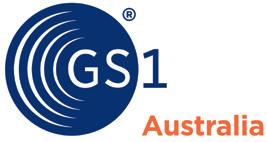

After decades of little innovation with new treatment options, Australia’s mental health sector is experiencing a major paradigm shift, with the introduction of medicinal psychedelics.
From the first of July this year, people experiencing treatment-resistant depression or post-traumatic stress disorder (PTSD) have been allowed access to psilocybin or MDMA through an authorised psychiatrist, as part of their therapy.
For many clinicians and their patients, the introduction of psychedelic medicine is a welcome move, with remission rates for common mental health conditions having remained stubbornly low for decades.
Of the one in eight Australians who take traditional pharmacotherapies for depression, only 35% will experience remission; and for PTSD, the outlook is considerably worse, at less than 10%.
By comparison, around 60–70% of PTSD sufferers treated with medical-grade MDMA as part of their therapy went into remission in recent Phase 2 and 3 clinical trials.
Peter Hunt, Co-founder of mental health charity Mind Medicine Australia, said that with one in five Australian adults living with chronic mental illness, the move to new treatment options can’t come soon enough.
“We haven’t seen much innovation in the mental health space for decades and that explains why we have failed to improve remission rates over that time. Medicinal psychedelics will change that. They have proven to be safe and effective in clinical trials and are giving hope to people who are running out of options. That’s why we are putting so much effort into making them more known and accessible to the general population with appropriate controls in place,” he told Hospital+Healthcare

Not all clinicians support the use of medicinal psychedelics, with some concerned they could induce a psychosislike state. Indeed, in an unregulated or recreational environment consumption of MDMA and psilocybin can be psychologically harmful for a small group of people, with lasting side effects, like flashbacks and anxiety.
However, Hunt believes comparing medicinal versus recreational usage is unfair.
“Unlike a number of other drugs that already exist in the market, there is a big difference between what is considered a ‘medicinal’ versus ‘toxic’ quantity of MDMA and psilocybin; and patients can’t overdose because these medicines will only be available in medically controlled environments,” he said.
“Of course, some people may have a challenging experience when taking MDMA or psilocybin in a medical context, but that’s actually part of the therapeutic process. Therapists will encourage their patients to move towards any negative emotions they experience during their sessions with the medicines and confront them. In doing so, patients may find that some of the negative feelings evaporate.”
To support this and other aspects of the psychedelic experience, Mind Medicine is currently training hundreds of clinicians throughout Australia.
“It is important that clinicians understand how to support a patient going through
the psychedelic experience; and how to recognise which patients are suited to the therapy. If patients are already on antidepressants, the treating psychiatrist will need the knowledge and skills to take them off those medications safely,” Hunt said. Alongside this fundamental training, the organisation is also taking steps to manage clinician burnout.

“The work is arduous and some therapists may experience compassion fatigue, which could affect the quality of the clinical guidance they give to patients during the medicinal session. The psychedelic process can last for up to seven hours, so that is a long time for a clinician to sit and be present with their patient. The training gives clinicians the tools to handle this and look after themselves.”
To further manage burnout, a rethink of the typical working week may also be required, Hunt said.
“Clinicians might only realistically undertake one or two medicinal dosing sessions a week, so the system needs to allow for
this. Of course, this might initially create workforce challenges but, in the long run, this will ease, because the improved remission rates should mean that fewer people remain in the mental health system.” Whatever the challenges of pursuing new treatment innovations like psychedelic medicine, Hunt believes the risks of not doing so should not be forgotten.
“In the world of physical health, we see this kind of balanced risk assessment regularly. If someone has cancer the doctor will immediately compare the risk of surgical intervention with the risk of not surgically dealing with the tumours.
“In the world of mental health, we don’t see these risk comparisons being made as often. We worry about the consequences of using a new treatment for a person with debilitating depression but we don’t measure this against the suffering of that person and the adverse impacts on their quality of life.
“It’s time we shifted the focus and put the patient’s needs first.”


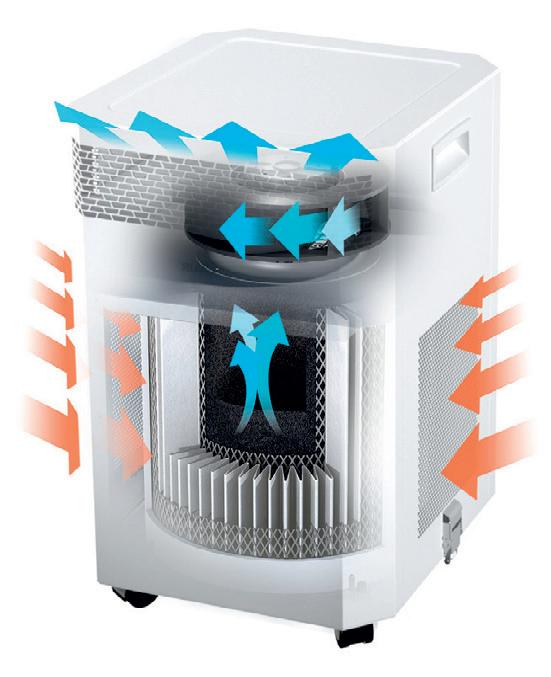

The construction of Redlands Satellite Hospital has been completed with work now underway to equip and prepare the facility ahead of an official opening later in the year.
The hospital will have the capacity to deliver each week: walk-in care for up to 490 patients for minor injuries and illnesses, 144 renal dialysis treatments, 90 chemotherapy treatments and 280 outpatient appointments. The facility also features medical imaging and diagnostic services, including ultrasound, X-ray and pathology.
Redlands Satellite Hospital is one of seven new satellite hospitals that will support healthcare delivery in communities across South East Queensland. It hopes to take pressure off emergency departments and major hospitals in the region and help meet

the increasing demand for services we’re seeing in this growing community. It will work in tandem with the expansions underway at Redlands hospital, including a 28-bed modular ward expansion and Stage 1 Major Hospital Expansion, delivering 37 extra beds and a new ICU.
Priscilla Radice, Deputy Director-General Health Capital Division, Queensland Health, said, “The seven satellite hospitals being delivered across the southeast corner are being designed by Conrad Gargett through a single design philosophy to promote patient comfort and wellbeing.”


The healthcare industry is constantly evolving, and hospital design is no exception, Radice said. “There is a lot of work being done to redefine clinical hospital settings, with new technologies and trends emerging all the time and a keen focus on designing facilities that prioritise patient care, staff satisfaction and operational efficiency.”
Christopher Hall-Jordan, Senior Associate Conrad Gargett, said, “The complexity of designing a single solution for differing topography, climates and varying site conditions, as well as the varied service offerings required by the different Hospital and Health Service user groups, provided an opportunity to develop a new robust yet flexible framework.
“The architecture, interior design, landscape architecture and wayfinding and signage of each site are united by a clear human-centred design philosophy, guiding principles and a collection of design strategies.
“The seven healthcare facilities are guided by a single design philosophy that prioritises empathy for patients and families, and support the complex needs of the healthcare professionals.
“The architecture and interior design guiding principles redefine the clinical hospital setting through the gaze of a personal experience rather than that of a patient — first considering the user’s journey, a connection to nature and community, and the context in which each facility is sited,” Hall-Jordan said.

The guiding principles are clarified through a collection of 10 design strategies that are manipulated to fit each site, responding to site conditions and the varied functional requirements for each facility. These strategies include: landscaped transitions,
central courtyards, warm handovers, open site lines, buffered building edges, H-shaped building layout, articulated roof and daylighting, sheltered thresholds and shading, considered materiality and site-specific contextual reference.
“Conrad Gargett has delivered a purposebuilt environment that will positively impact health outcomes and support the delivery of public healthcare,” Radice said, noting that as infrastructure design in the health landscape continues to evolve, we will see more health services adopting these innovative approaches.
“The seven satellite hospitals being delivered across the southeast corner are being designed by Conrad Gargett through a single design philosophy to promote patient comfort and wellbeing.”
Caire provides everything you need for your oxygen therapy, from oxygen concentrators to accessories, we are dedicated to helping you breathe easy.
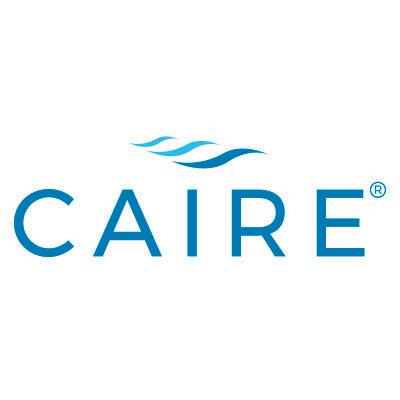

Expand your comfort zone with this innovative and powerful design:
• Compact and Lightweight
• Lasts all day
• Ergonomically Designed
• Quiet
Combining portability with clinical efficiencygiving you the freedom to travel and enjoy life on the go: Compact and transportable
Extended Battery Life
• Quiet
• 24/7 Use
Stationary oxygen concentrator that’s durable with a high continuous flow:
• Higher flow options for patients in hospitals or long-term care facilities
Dual flow option allowing two patients to use simultaneously
• Easy to service and maintain
A power efficient stationary oxygen concentrator is the must have for your home oxygen delivery needs:




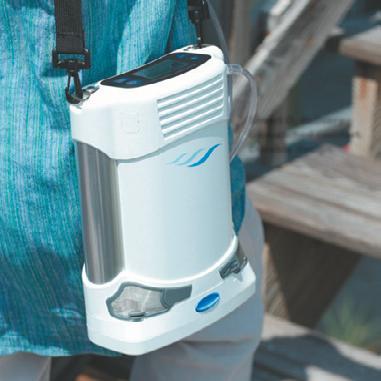
• Lightweight and easily transportable
• Low failure rate with no preventative maintenance schedule
Lockable flow meter caireaustralia.com.au
Eclipse 5 AirSep VisionAire 5The spread of infection in the healthcare sector is an ongoing challenge for operators, so what can providers do to minimise risk and protect patients, staff and visitors?
Within healthcare settings such as hospitals and care homes, MRSA and Clostridium difficile are among the most common infections and an outbreak can place additional strain on stretched staff and resources.
It’s clear, therefore, that proper surface cleaning and disinfection routines are key to controlling infection with a starting point being high-touch surfaces that can harbour bacteria.
While the scale of surface cleaning differs between low-risk (foyers, waiting rooms, offices and corridors) and high-risk (operating theatres and intensive care wards) areas, it’s vital that cleaning program managers do not become complacent.
Many healthcare providers have identified the need to educate staff at every level — not only those responsible for cleaning — of the importance of hand hygiene and to raise awareness of infection control.
That’s because seemingly innocuous equipment shared by staff such as keyboards, stethoscopes and ultrasound probes cannot be underestimated as they are a major cause of cross contamination and should all be wiped down regularly with disinfectant. The same is true of chair arms and seats in waiting areas.
Meanwhile, call bells, grab rails, door handles and opening buttons/panels are touched countless times each day and are among the most likely surfaces to transmit infection.
And in all toilet areas, from wards to public washrooms, it’s essential that high-touch surfaces including taps, flush handles, dispensers, hand dryers and door handles are not neglected due to a focus on obvious areas such as toilet bowls, sinks and floors.
Despite the site operator’s responsibility for overall management of on-site hygiene, it’s important to remind staff, patients, visitors and contractors to take ownership of their wellbeing.
As well as installing and regularly filling soap, towel and sanitiser dispensers, managers should display positive messaging to reinforce the serious consequences of infection on healthcare provision and encourage use of hand hygiene systems.
Of course, dispensers themselves can harbour bacteria as they are always touched when hands are dirty, and as well as installing automatic touch-free systems operators can ensure janitors regularly wipe these down as part of their cleaning routine.
On this subject, cleaners are a vital part of the overall healthcare team and, at a time when janitorial staff retention is notoriously difficult, facilities and services managers should empower them and give them proper tools for the job.
For example, dispensers should be quick and easy to refill, with simple features such

as viewing windows for a quick product level check making a big difference.
Managers can also make use of IoT technology to assist cleaning staff, especially those working on larger hospital sites for whom walking between hand sanitiser dispensers only to find that the systems are still full may be monotonous and dispiriting. The latest internet-connected systems can display remaining product level for multiple dispensers via an online portal or smart device app, meaning personnel are able to ensure dispensers are full at all times and do not need to be reminded to refill. Not only does this increase efficiency and ensure hand hygiene solutions are always available, the janitor is empowered and feels a greater sense of value in their job.
SEKO is trusted worldwide for its professional cleaning and hygiene equipment and supplies the global healthcare sector with a wide range of infection-control systems including soap, paper and sanitiser dispensers, chemical dilution systems and spray stations.
How healthcare providers prevent infection
IoT-enabled laundry dosing systems
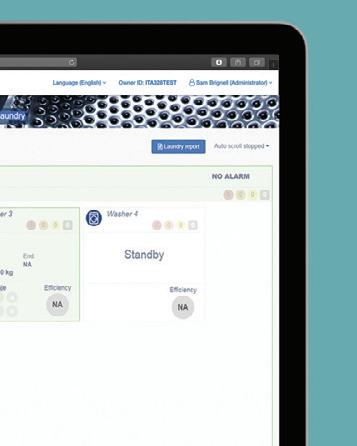

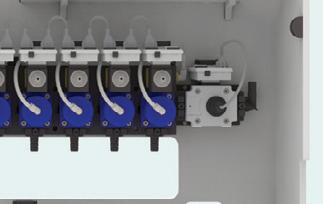
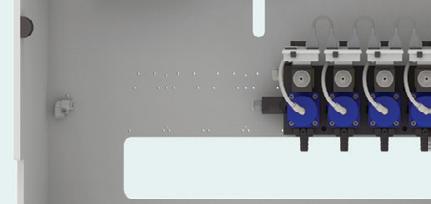






Take control whether you’re at work, at home or on the move
SekoWeb
Data on demand
• Access multiple machines from a single app






• Data on demand reveals the true cost of your laundry
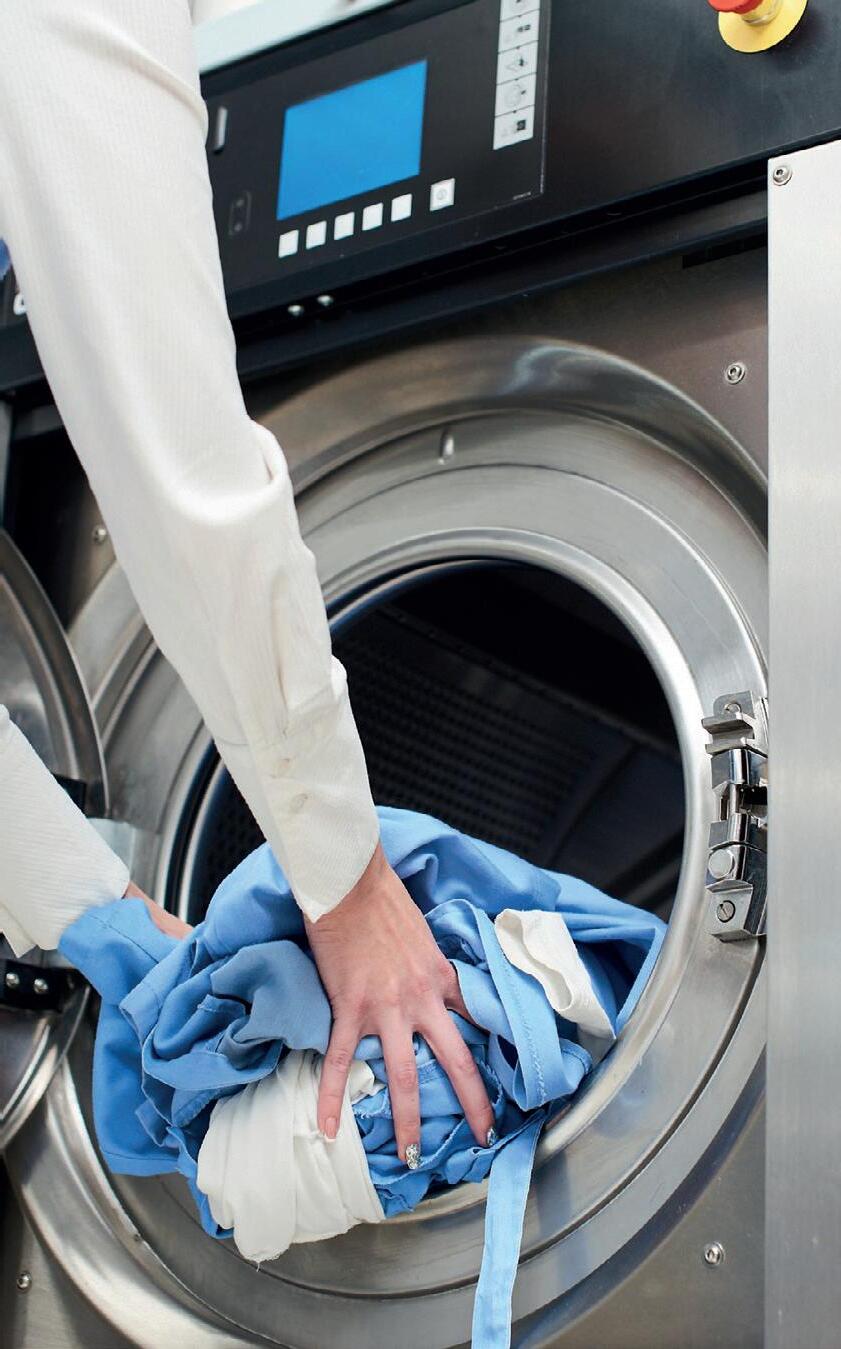
• Adjust programming 24/7 from any location
• Connect via PC, iOS or Android
www.seko.com



Abrand-new Sensory Playground at The Children’s Hospital at Westmead, New South Wales, allows children of all abilities and ages who are staying or receiving treatments to explore their imagination in fun and engaging ways. It also provides an inviting space for the whole family to seek respite outdoors.
The new playground, delivered as part of the $619 million Children’s Hospital at Westmead Stage 2 (CHW2) Redevelopment, features spinning and rocking equipment, a light tower, squeezing cylinders, a rain wheel and a coconut hut.


Sydney Children’s Hospitals Network (SCHN)
Acting Chief Executive Sayeed Zia said, “Sensory environments are great outlets to alleviate stress for children and young people, and this playground was developed with all children in mind — regardless of age, ability, illness, injury or length of stay in hospital.”
The playground was developed in consultation with parent groups, clinicians and members of the local Aboriginal community to ensure the design complements the local environment and is inclusive of all children and young people.

Health Infrastructure Executive Director Northern Region Leisa Rathborne said the playground will be boosted further, with work on a second play area with swings and balancing animals scheduled to begin later this year.
“Time in hospital can be hard for anyone, let alone children and their families. That’s especially the case for young people with diverse abilities and mobility aids,” said NSW Minister for Health Ryan Park.
“This new playground is designed with inclusive features and accessible play equipment, pathways and seating areas that engages children’s imaginations through touch, sound and visual elements.
“This space can also be used beyond play and exploration — for therapeutic and physical therapy sessions.”
The $619 million CHW2 redevelopment is expected to be completed by 2025. It includes the construction of a Paediatric Services Building, multi-storey car park, the refurbishment of existing parts of the hospital and a revitalised forecourt.
“This space can also be used beyond play and exploration — for therapeutic and physical therapy sessions”
Incontinence-associated dermatitis (IAD) is a common and under recognised problem, caused by breakdown of the skin in individuals with incontinence, especially those with faecal incontinence.1 It can be accompanied by redness, blistering, erosion and secondary infection.2
Proper skin care is essential in managing IAD and preventing its recurrence. Traditionally, a 3-step process involving cleansing, moisturising, and protecting the skin has been followed. However, an alternative approach using 3-in-1 IAD wipes has gained popularity due to its perceived advantages. In this article, we will explore both methods, highlighting their respective benefits.
Global guidelines champion the use of 3-step skin care regimes2, however, they also suggest that traditional cleansing isn’t suitable for preventing and managing IAD.2,3
The 3-step process involves assembling multiple products, and completing each application while following manufacturer instructions during an extended care episode. In contrast, 3-in-1 IAD wipes streamline the process by eliminating the need for multiple products, as the cleansing, moisturising
and protecting properties of these wipes significantly reduce the time spent on each care episode.
Standardised care delivery is crucial for the effective treatment and prevention of IAD. This is particularly important in healthcare facilities where multiple carers are involved. Utilising a single product for IAD management reduces treatment variations and minimises the risk of inconsistent care occurring.

Basins used for patient bathing have been shown to be contaminated with multidrugresistant organisms.4
The 3-step process, involving the use of water basins for bathing, poses an infection risk to vulnerable or immunocompromised individuals. The use of 3-in-1 IAD wipes reduces the risk of spreading pathogens, promoting a safe and hygienic care environment for patients and residents.
Extensive training is required to effectively carry out the traditional 3-step process of cleansing, moisturising, and protecting. The carer needs to understand:

• Proper skin care techniques
• Suitable skin-neutral pH products
• How to apply them correctly with appropriate quantities
• Adherence to the required drying time between each application.
A simplified approach to skin care is possible with 3-in-1 IAD wipes. These wipes make it easier to train caregivers to deliver care consistently. With a single product, the training process can be streamlined, focusing on proper technique, and understanding the specific needs of individuals with, or at risk of, IAD.
From a logistical standpoint, the 3-in-1 IAD wipe simplifies stock management. Healthcare facilities and caregivers need to stock only one product instead of multiple items for each step of the traditional process. This can lead to reduced forecasting and costs, and increased convenience. The potential for a reduction in suppliers also provides operational and cost efficiencies. The choice between these methods ultimately depends on individual preferences, available resources, and specific end-user needs. Both approaches aim to provide optimal care for individuals with incontinenceassociated dermatitis, and caregivers should make an informed decision based on their unique circumstances.
Want to learn more about managing IAD, order your Contiplan FREE IAD Care Pack today!
1. Rippon, M., Colegrave, M., & Ousey, K. (2016). Incontinence-associated dermatitis: reducing adverse events. British Journal of Nursing, 25(18), 1016-1021.
2. Beeckman, D., Campbell, J., Campbell, K., Chimentao, D., Coyer, F., Domansky, R., Gray, M., Hevia, H., Junkin, J., Karadag, A., Kottner, J., Arnold Long, M., McNichol, L., Meaume, S., Nix, D., Sabasse, M., Sanada, H., Yu, P., Voegeli, D., & Wang, L. (2015). Proceedings of the Global IAD Expert Panel. Incontinence-associated dermatitis: moving prevention forward. Wounds International. www. woundsinternational.com
3. Best Practice Statement. Care of the Older Person’s Skin. London: Wounds UK. 2012 (2nd edition). Available to download from: www.wounds-uk.com. Accessed Mar 16, 2023.
4. Dror Marchaim, Alexis R. Taylor, Kayoko Hayakawa, Suchitha Bheemreddy, Bharath Sunkara, Judy Moshos, Teena Chopra, Odaliz Abreu-Lanfranco, Emily T. Martin, Jason M. Pogue, Paul R. Lephart, Sanjeet Panda, Sorabh Dhar, Keith S. Kaye, Hospital bath basins are frequently contaminated with multidrug-resistant human pathogens, American Journal of Infection Control, Volume 40, Issue 6, 2012, Pages 562-564, ISSN 0196-6553, https://doi.org/10.1016/j. ajic.2011.07.014. (https://www. sciencedirect.com/science/article/ pii/S0196655311010108)
An AI tool to improve the safe use of intravenous heparin is being developed by researchers at Princess Alexandra Hospital.

Anew tool, designed to improve patient safety, inputs data from the EMR and uses machine learning to predict if patients will achieve a therapeutic effect for a given dose of IV heparin, a blood thinning drug, as measured by a blood test called the activated thromboplastin time (aPTT). This helps prevent underdosing, which will not effectively dissolve or prevent the clot, or overdosing, which may cause a bleed.
The development of this tool has been made possible due to Queensland Health’s
significant invest-ment in implementing electronic medical records (EMRs) into 16 public hospitals over the last seven years.
Professor Ian Scott, Director of Internal Medicine and Clinical Epidemiology at PAH, said, “A lot of patients are admitted to hospital with conditions such as acute coronary syndrome, deep venous thrombosis and pulmonary embolism and they need to be treated with IV heparin to dissolve a blood clot or thin their blood to prevent further clots.
“IV heparin allows you to achieve therapeutic effects fairly quickly and also has the advantage of a very short half-life. This means the effects will clear pretty quickly when dosing is stopped if the patient starts to bleed.
“The problem with IV heparin dosing is that individuals vary markedly in how they metabolise this drug, so each patient’s response is hard to predict.”

He said aPTT testing would ideally be conducted within six to eight hours of the initial dose and then at regular intervals so that the infusion dose of heparin could be adjusted accordingly.
“What we have found is that in many cases, it takes a long time to reach a therapeutic aPTT in patients who have potentially lifethreatening conditions. In a study of about 200 patients at PA Hospital, it took a median time of 36 hours to achieve a therapeutic aPTT.
“The aim of the research using the AI model is to answer the question: if we give this patient a certain bolus dose and a certain maintenance infusion, what is the aPTT likely to be within the next 12 hours?” Scott said. EMR data from 2783 hospital patient admissions across four hospitals in Metro
South from 2017 to 2020* was gathered on a host of patient factors such as weight, biochemistry, full blood count, past medical history, age and sex, as well as various other clinical measures. Across all these admissions, at 12 hours after initiation of IV heparin:
• about 60% of aPTTs were below the therapeutic range;
• 17% above (toxic);
• 23% within therapeutic range.
“Working with data scientists from the Clinical Informatics team here at Metro South, we developed a machine learning model, using a commercial software package, which was shown to be highly accurate in predicting which patients would have a subtherapeutic aPTT and moderately accurate in predicting which patients would have a supratherapeutic aPTT,” Scott said.
Senior Director of Digital Health and Informatics at Metro South Stephen Canaris said the strength of the collaboration between data scientists, informatics teams and the clinicians involved in the project was about bringing the value of each specialty to the development and validation of the model.
“There will always be questions that data scientists can’t answer which will require clinical knowledge to determine the choice and range of patient factors to collect, but machine learning means that a host of factors that might affect the outcomes will be teased out in the process that clinicians won’t have intuitively known about,” Canaris said.
“In this instance, machine learning was able to identify about 93 factors (or variables) that were influential — but not equally important — in deciding how an individual patient responds to IV heparin. In partnership with clinicians, we were able to grade these to develop the top 10, followed by another 20 or 30 variables, that had the most predictive value,” he said.
“After developing the AI tool, we then moved to ‘internal validation’ where we looked at the predictive performance of the model which showed it had reasonably good accuracy,” Canaris said.
Scott explained the importance of these results.
“The model was highly accurate in predicting which patients would have a sub-therapeutic range which has considerable implications for preventing underdosing of patients, particularly those who have suffered a severe pulmonary embolism,” he said.
“We are now backward engineering the model so that we can answer the question clinicians will ask: what bolus dose and what maintenance dose should I prescribe in order to achieve an aPTT of say, 70 or 80 seconds within the next six to 12 hours?”
Once this retrofitted model has been developed, the next steps will involve further validation studies using live data to test its accuracy, then convert it into a prototype application (app) to apply to the EMR, and, if all goes well, work towards obtaining approval from the Therapeutic Goods Administration given this is a software-as-a-medical-device application.
“An important step in proving the clinical utility of this AI tool will be a prospective clinical trial where the tool is used in one hospital (or unit) but not in another, and we compare the outcomes of patients receiving IV heparin in sites that use or do not use the tool” Scott said.
“Aside from accuracy, the value-add for this research will be integrating the tool within the EMR alongside other models currently in development, such as an early warning alert tool for clinically deteriorating patients developed by ICU/CSIRO researchers, and other predictive models focused on patient medication safety that we are currently developing.
“We have a way to go, but it’s a promising start.”
*The model was first trained and internally validated on data from 2783 admissions to PA, Logan, QEII and Redland Hospitals, and then underwent external validation using data from 236 admissions to Gold Coast Hospital.
The buildings where we live, work and entertain absorb more than 42% of the world’s energy consumption due to heating, cooling and lighting systems. Over the next 25 years, worldwide energy demand is expected to grow by over 40%, calling out an urgent need for energy efficiency and sustainability.
Hospitals are no exception to this rule, and yet many still lack an effective strategy to manage their energy consumption and keep costs under control. To compete effectively, hospitals must adopt revolutionary plans to manage and optimise their operational performance, utilising cutting-edge digital technologies and leveraging the power of the Internet of Things (IoT).
Often, organisations do not have control over their energy consumption, nor an accurate methodology to inform them on how their site or building is operating. To reap the full benefits of digitalisation, hospitals must understand how much energy is being consumed, but also how it is consumed. Thus, the first and most important step is to identify a baseline for the behavior of the electrical system. Metering provides energy managers and operators reliable information, real-time or aggregated, on energy usage. Most often, an energy data and analysis backbone coupled with a robust plant-energy model will reveal patterns of energy waste that would be impossible to see otherwise. Improvements based on metering have been shown to reduce energy consumption by as much as 45%.
But benchmarking cannot be accurate without constancy: continuous monitoring is necessary in order to tell if a sample represents a good or poor status. Such an approach is also the base for energyefficiency processes and strategies in production environments.
For example, Energy Performance Indicators (EnPI) used mostly to acquire certifications, or as a base for energy audits, provide the highest potential to identify paths and the effects of interventions — but only if they are continuous and structured.
In numbers, let’s assume that a 5% energy efficiency improvement — quite easy to achieve with a metering system installed — can reduce electricity consumption by approximately 5%.
Let’s assume as well that the organization’s industrial production site (which includes a solar rooftop) incurs an average energy cost of $1.2 million per year. By measuring and monitoring the electrical distribution system, the organisation can save thousands, if not hundreds of thousands annually. In our hypothetical example, the cost savings on the energy bill amount to $60,000 per year.

Energy’s future will embrace new value chains interconnected by digital technologies with continuous, multidirectional data flow. All stakeholders will add their own value to the system, ensuring a higher overall efficiency at all levels, from production to the final consumer.
Simple or complex energy management systems will play a pivotal role in this changing ecosystem, promising to generate huge ROI through improved efficiency, yield and asset availability.
Digital transformation will also include artificial intelligence (AI) and machine learning (ML) technologies. These advanced technologies are being developed to help commercial and industrial buildings predict unplanned behaviors related not only to energy consumption, but also power quality and asset reliability, leading to even greater energy efficiency. The most advanced applications will include industry-specific solutions, which will offer the possibility of adopting future technology.
For most hospitals, a substantial shift in thinking, along with changes to their existing energy infrastructure, will be required in order to capitalise on next-generation digital technologies. The time for that change is now.

After all, organisations have a social responsibility to become more efficient, greener and more sustainable. As demand for energy grows, it is undeniable that integrated energy management is a fundamental component of that future.
To learn more about ABB and its comprehensive portfolio of energy management solutions for hospitals and healthcare, visit the ABB Electrify Australia website.
The new era of energy management for hospitals:
How to reduce your OpEx while achieving sustainability


New guidelines provide eleven recommendations on when, how and in what situation it may be appropriate for clinicians to reduce opioid use by placing the patient at the centre of the equation.
The University of Sydney-led guidelines, developed by Australian and international experts, recommend that clinicians develop personalised deprescribing plans from the beginning for any patient being prescribed opioids.
The guidelines also advise clinicians against abruptly stopping opioid treatment without gradually reducing the dose or transitioning to different treatments, saying it could increase risk of withdrawal symptoms. This includes people with severe opioid use disorder, as doing so without giving them access to opioid substitution therapies can lead to a higher rise of overdose-related harms.
Recommendations also advise clinicians not to deprescribe opioids for people nearing end of life unless there are side effects.
The recommendations and summary of the guidelines are published in the Medical Journal of Australia. The guidelines were led by 17 experts, including general practitioners, pain specialists, addiction specialists, pharmacists, registered nurses, consumers and physiotherapists.
The Evidence-based Guidelines for Deprescribing Opioid Analgesics is the first international guideline focused on helping general practitioners to safely reduce opioid use for adults with pain, and aims to improve quality of care for patients.
Opioids are commonly prescribed to manage pain, with over 1.9 million adults starting opioid therapies each year in Australia. Approximately 5% of patients who fill an opioid prescription transition to long-term use.
Senior author Associate Professor Danijela Gnjidic from the School of Pharmacy said opioid deprescribing may not be appropriate for every single person with emerging evidence that abruptly deprescribing opioids in patients, without support or pain management plans, is associated with overdose-related harms and death.
“It is possible to reduce opioid use and harms without worsening pain, whilst maintaining or even improving quality of life. However, pain management should not be one-dimensional,” Gnjidic said.
“Before the release of the guidelines, in Australia, clinical guidelines have focused on pain management and prescribing of opioids. We needed evidenced-based guidelines focused on safely reducing or stopping prescribed opioids, and individualised care for patients.”
“Opioids can be effective in pain management. However, over the longer term, the risk of harms may outweigh the benefits,” said fellow senior author Associate Professor Carl Schneider from the School of Pharmacy.
“Reducing the dose or discontinuing (deprescribing) opioids can be challenging, with additional complexity for Aboriginal and Torres Strait Islander Peoples and culturally and linguistically diverse communities. We received strong feedback on the need for specific resources for those communities on how to seek advice from healthcare professionals and be actively involved in decisions.”
Lead author Dr Aili Langford said the best available evidence was interpreted and informed by expert opinion, and refined following extensive public consultation with healthcare professionals, organisations, policymakers and people who take opioids for pain.
“Internationally we were seeing significant harms from opioids, but also significant harms from unsolicited and abrupt opioid cessation. It was clear that recommendations to support safe and person-centred opioid deprescribing were required,” said Langford, who worked on the report during her doctorate at the University of Sydney and is now based at Monash University.

Pain and pain-related conditions are a leading cause of disability and disease burden globally. In Australia, one in five adults report having chronic pain.
Escalating opioid use and subsequent harm has been recognised as an international public health concern. The World Health Organization has set a global goal of reducing severe avoidable medicationrelated harms. In 2020, Australia responded by identifying opioids as one of the four medicines of focus in the country.
The guidelines complement the national Opioid Analgesic Stewardship in Acute Pain Clinical Care Standard, released last year by the Australian Commission on Safety and Quality in Health Care, which aims to stop inappropriate prescribing of opioids to treat acute pain in hospitals.
“It is incredibly important that we prescribe opioids safely and appropriately so that we don’t compromise the future health of Australians,” said Associate Professor Liz Marles, Clinical Director at the Commission and a general practitioner.
“These new guidelines further support appropriate use of opioid analgesics and how to safely prescribe and stop prescribing them. They ask clinicians to consider reducing or stopping opioids when the risk of harm outweighs the benefits for the individual.
“Shared decision-making and ensuring that patients have ways to manage their pain are essential when a deprescribing plan is being discussed. Ultimately, we are all working to reduce the number of Australians at risk of harm from long-term opioid use, which will have broad societal benefits,” Marles said.

The O2matic PRO is a novel medical device that brings oxygen treatment to a new level. The technology was developed in close cooperation with four hospitals in Denmark and is demonstrated to quickly stabilise arterial oxygen saturation in patients suffering from conditions that can lead to respiratory distress(1,2)
The O2matic PRO solves the issue of the labour-intensive titration of oxygen flow rates associated with the current manual apparatus. Oxygen flow is automatically titrated responding to real-time arterial oxygen saturation (SpO2) as measured by pulse oximetry. The O2matic PRO controls the dose of oxygen administered to the patient to maintain the SpO2 within a prescribed target range; hence reducing patient–nurse exposure times.
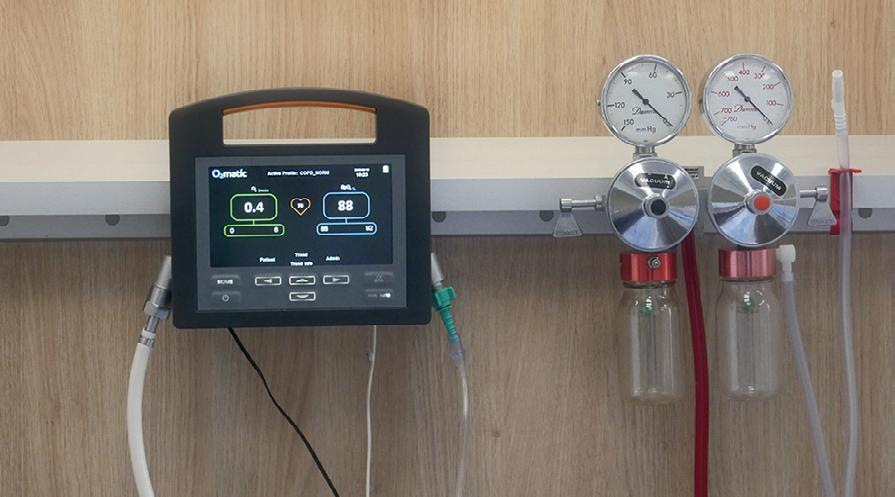
Supplemental oxygen therapy is central to the treatment of respiratory insufficiency caused by a variety of acute and chronic diseases. A clinical study conducted with the use of the O2matic PRO on patients suffering chronic pulmonary diseases demonstrated its ability to keep oxygen saturation within a prescribed bracket with the use of its unique algorithm(1). It shows that the O2matic PRO maintains the oxygen saturation within the specified range 85% of the time, in contrast to 47% achieved by the conventional practice, while decreasing episodes of hypoxemia(1). Another study conducted on admitted patients of the 2020 global pandemic demonstrated similar results. Using the O2matic PRO, medical staff were able to maintain patient oxygen saturation within the prescribed bracket 83% of the time(2)
Key benefits of closed-loop oxygen therapy:
• Improving patients’ time within the target SpO2 levels(1,2) hence reducing mortality rates(3)
• Reducing oxygen consumption by up to 50% (4)
• Faster weaning from oxygen and reducing length of stay (5)
• Reduction in costs of care (6) and patient–nurse exposure times. Automatic closed-loop oxygen therapy has been the subject of many more clinical studies with promising outcomes. To request a summary of clinical studies and technical features, please visit our website www.boc.com.au/o2matic.


The O2matic PRO maintains the oxygen saturation within the specified range 85% of the time in contrast to 47% achieved by the conventional practice in patients with chronic respiratory disease(1)
References
1. Automated oxygen control with O2matic ® during admission with exacerbation of COPD. Hansen, Ejvind Frausing, et al. 13, s.l. : International Journal of Chronic Obstructive Pulmonary Disease, 2018, Vol. 14, pp. 3997-4003. 2. Automatic oxygen titration with O2matic® to patients admitted with COVID-19 and hypoxemic respiratory failure. Hansen, Ejvind Frausing, et al. 1, s.l. : European Clinical Respiratory Journal, 2020, Vol. 7. 3. Mortality and morbidity in acutely ill adults treated with liberal versus conservative oxygen therapy (IOTA): a systematic review and meta-analysis. Derek K, Chu, et al. 391(10131), s.l. : Lancet, 2018, Vol. 28, pp. 1693-1705. 4. Autonomous control of inspired oxygen concentration during mechanical ventilation of the critically injured trauma patient. Jay A, Johannigman, et al. 2, s.l. : J Trauma, Feb 2009, Vol. 66, pp. 386-392. 5. Automatic versus Manual Oxygen Titration in Patients Requiring Supplemental Oxygen in the Hospital: A Systematic Review and Meta-Analysis. MH, Denault, et al. 98, s.l. : Respiration; International Review of Thoracic Diseases, 2019, Vol. 19, pp. 178-188. 6. Cost-effectiveness of FreeO2 in patients with chronic obstructive pulmonary disease hospitalised for acute exacerbations: analysis of a pilot study in Quebec. TG, Poder, et al. 1, s.l. : BMJ Open, Jan 2018, 8(1):e018835.
The O2matic PRO device easily connects to existing oxygen wall outlets or oxygen cylinders.
BOC: Living healthcare www.boc.com.au
»
For more information please call 1800 050 999 | email healthcare@boc.com or visit www.boc.com.au/o2matic
— to help clinicians screen patients for these complex, multi-layered issues.
Anything that may negatively impact a patient’s ability to make a good decision regarding cosmetic surgery must be carefully assessed to ensure the patient is making the right decision for the right reasons.
Learning about conditions such as body dysmorphia has long been an integral part of the plastic surgery training curriculum.
The news that this once-informal process will now be mandated and formalised through a validated screening tool is a major win for patient safety.
From 1 July, the medical regulator is bringing in new regulations around which vulnerable patients may need to be referred for psychological or psychiatric assessment before surgery.
The Australasian Society of Aesthetic Plastic Surgeons (ASAPS) has been working in collaboration with the Australian Foundation for Plastic Surgery for five years to develop a tool alongside leading psychological experts — including renowned psychologists Emeritus Professor Nichola Rumsey and Dr Alex Clarke

The tool is set to be released exclusively to ASAPS members prior to 1 July with an aim to help improve patient safety while also enabling members to comply with the medical regulator’s new guidelines.
Only available to clinicians, the online tool contains 13 questions covering factors that influence people’s expectations of surgery, including mental health, social media, intimate partner relations, eating disorders, personality disorders and body image. The tool has been designed to help to reduce patient dissatisfaction as a result of unrealistic expectations and determine whether patients are psychologically well enough to undergo cosmetic surgery.
For registered specialist plastic surgeons, looking for signs of mental health issues has always been an important part of training.
The online tool will help surgeons make accurate, real-time decisions on who to refer for psychological or psychiatric assessment before surgery is further considered. It will also help to identify people who should not pursue surgery at all, using an easy-to-use traffic light system.
A lot of time has been spent ensuring the questions are designed in a way that maximises the chances of valid and authentic answers. They are both comprehensive and practical enough to identify all red flags, but not so detailed and specific that they lose objectivity and practicality.
Research from the Australasian Foundation for Plastic Surgery found 30% of people would benefit from further assessment or education prior to considering surgery. These people might suffer from anxiety, depression, an eating disorder or body image issues exacerbated by social media. A much smaller group could have vulnerabilities that should altogether exclude them from surgery, such as body dysmorphic disorder.
No matter how well versed a clinician may be in assessing a patient’s red flags in a more informal way, the tool can help catch those patients who may once have slipped through the net.
It’s important to note that this isn’t a ‘test’ designed to intimidate patients or reduce the number of patients receiving surgery. It’s a tool to encourage and facilitate more relaxed, realistic conversations between patients and their practitioners and ensure the highest possible psychological safety for the patient. It’s also a great way to build stronger relationships with patients, in order for them to feel seen and heard.
In extreme cases of patient dissatisfaction, litigation can be the unfortunate next step. In Australia, around 16% of all healthcare disputes related to cosmetic surgery. Of these, 39% of patients claimed the surgeon failed to explain the potential lack of benefit, and 26% alleged they were improperly informed before consent.
ASAPS’ new tool is designed to help stem these issues at the source and screen out patients who are at risk of extreme dissatisfaction with their surgical outcome, irrespective of how well the procedure has been performed. The tool will help mitigate the extreme psychological harm of patient dissatisfaction and the ligation that can sometimes come along with it.
The new change isn’t about reducing the number of patients who receive surgery. In fact, we expect that between 85% and 90%
of patients will receive the green light when using this tool. The tool is more about looking at a patient as a whole person and paving the way for a successful surgery that the patient feels completely satisfied with.
By screening for unrealistic expectations and the psychological issues that can sometimes go along with those expectations, we can ensure that every patient is getting the right surgery for the right reasons.

Edwards has been a Specialist Plastic and Reconstructive Surgeon since 1998, honing the craft he learned over 10 years of postgraduate surgical training. Initially, this training started in South Australia’s major adult and paediatric hospitals, following on to the Canniesburn Plastic Surgery Unit in the United Kingdom. Tim credits his background in sport for endowing him with a strong focus and belief in the importance of the team rather than the individual. This led him to become one of the founding surgeons of Adelaide Plastic Surgery, developing an experienced team of specialist plastic surgeons, anaesthetists, medical and nursing professionals, and administrative staff, who all play their role in ensuring high level of patient care and safety.
Outside of the operating theatre, Tim is active in the philanthropic community, having spent many years initially with the South Australian State Library Foundation and, more recently, with the James and Diana Ramsay Foundation. At a local level, he is also a life member of the Walkerville Junior Football Club.

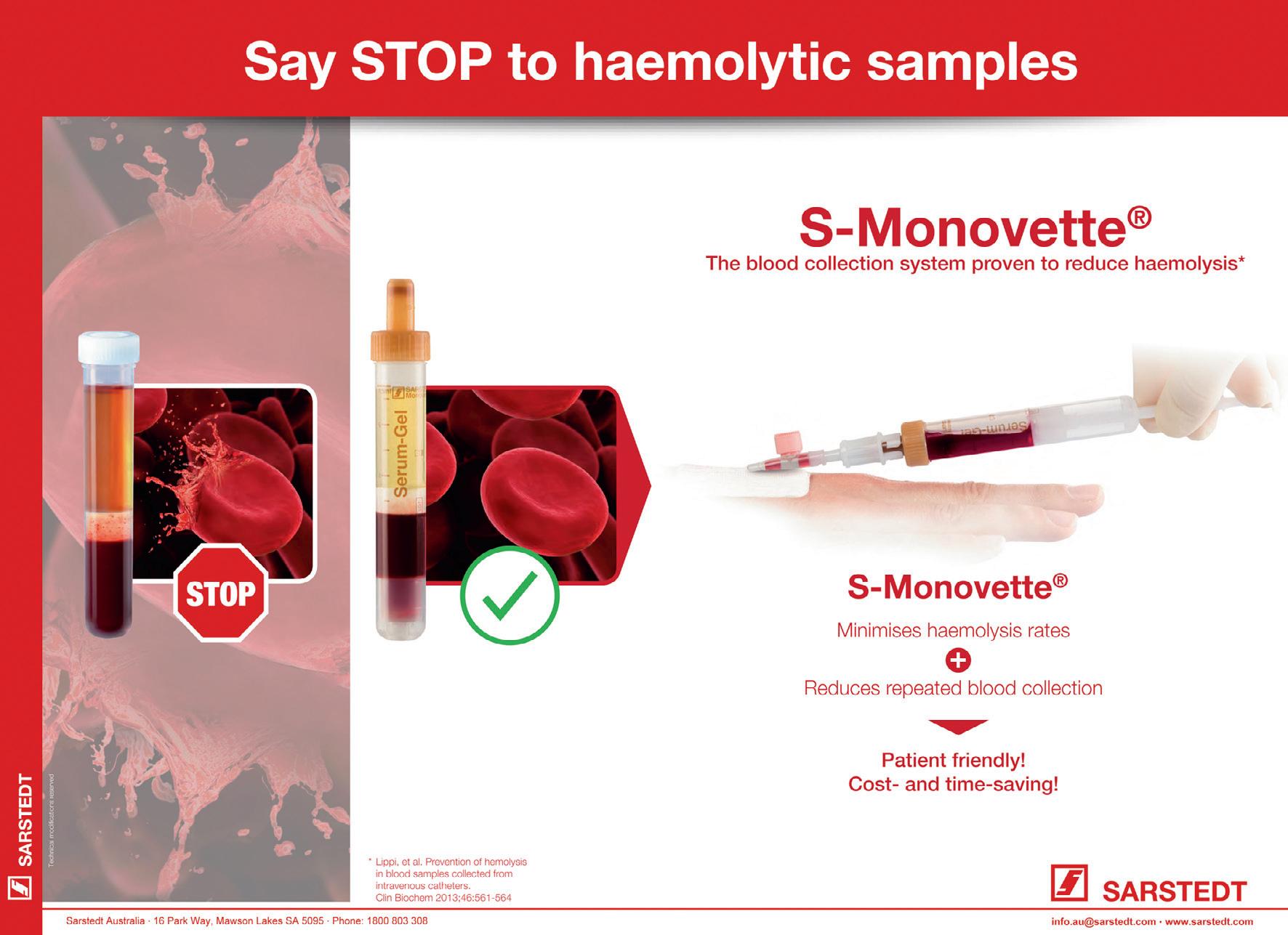
The S-Monovette is an innovative enclosed blood collection system that allows the user to draw blood from the patient using the syringe or vacuum method, uniting the advantages of both techniques in a single product.
When used as a syringe, the phlebotomist has full control over the speed at which the blood is drawn into the tube. This is particularly useful for patients with fragile veins, such as the very young or elderly, where the use of the aspiration technique prevents even the most fragile veins from collapsing. When the tube has been filled, the plunger is simply snapped off to leave a primary sample tube which can be centrifuged and is compatible with all major analysers.
The S-Monovette can also be used as an evacuated tube by drawing the plunger fully down and snapping it off immediately
prior to blood collection. This creates a fresh vacuum and ensures a precise filling volume, ensuring a correct dilution ratio.
The reduced vacuum pressure in the S-Monovette drastically reduces the rate of haemolysis and vein collapse, meaning increased sample quality and reduced costs associated with repeat collections. Furthermore, unlike pre-evacuated tubes, the S-Monovette does not have to hold a vacuum for many months after manufacture, which allows the membrane stopper to be thinner and more easily penetrated by the needle sheath. This minimises the movement of the needle in the vein when attaching the tube, ensuring optimum patient comfort.
The S-Monovette needle is ready to use so that there is no need for assembly to
a holder. The needle is of a compact, low profile design, which reduces the chance of haematoma by allowing for a reduced angle of puncture and eliminates the possibility of needle stick injury caused by assembly of the needle and holder. The compact design also results in approximately one sixth of the sharps volume caused by using a preevacuated system, giving significant cost savings.
If you would like a visit from one of our Sales Representatives to demonstrate this system, please contact us on toll free 1800 803 308
Sarstedt Australia
Public health agencies are responsible for executing critical missions that have a meaningful impact on constituents. To accomplish their missions more effectively, many organisations are turning to digitisation to improve workflows with automation, streamline agency processes, simplify data sharing and maintain compliance.
For government health agencies, cost and process optimisation remain paramount as mission-critical goals. Data sharing and lack of comprehensive insights within and across departments are key challenges and opportunities. The need for greater access to data drives the need for increased governance and compliance. Proactive planning and response to internal and external events drives the need for faster, more accurate data and analysis.
To achieve these objectives, public health departments have realised they need more efficient systems and processes as well as real-time access to usable data. They have launched initiatives to upgrade decadesold systems and modernise applications through digital transformation. These modernisation initiatives will also move departments to cloud-based applications, minimising infrastructure management and allowing employees to focus their efforts on more productive work.
One way to balance the conflicting imperatives to improve process and data transparency while enforcing compliance auditability is through hyper-automation.
According to Gartner, “hyper-automation in government is a systematic approach to rapidly identify, vet and automate as many business and IT processes as possible”.
In its Top Technology Trends in Government for 2022 Gartner predicts that by 2024, 75% of governments will have at least three enterprise-wide hyper-automation initiatives launched or underway.
The need for transformation
Primary Health Tasmania is one of 31 Primary Health Network organisations across Australia commissioning health services and health system change in the primary health sector. The government has tasked these organisations with increasing the efficiency and effectiveness of medical services for patients while improving the coordination of care.
Primary Health Tasmania’s commissioning model has three phases:
1. Strategic planning
2. Procuring services
3. Monitoring and evaluation
The organisation has historically used a paper-based manual system which failed
to provide the data visibility and process management needed to improve decisionmaking and increase efficiency. A lack of visibility on a broader scale also meant it couldn’t monitor whether day-to-day activities were in line with long-term health outcome goals.
“We’re knowledge workers who are very good at strategy, and while we were managing operations and governance well, it was being done manually,” explained Scott McKay, General Manager for Business & Finance at Primary Health Tasmania. “We knew the next step was to link up our strategy, operations and governance through the right technology platform so we could fully harness the knowledge and know-how of our people.”
Primary Health Tasmania initially identified 25 systems capable of creating its Business Process Management (BPM) platform. After an exhaustive selection process, Primary Health Tasmania chose to work with Appian

and its partner, Roboyo, because the Appian Platform for process automation was best able to provide the automation and data integration needed to empower the Primary Health Tasmania team.

McKay said one of the deciding factors was that Roboyo provided proof of concept and a working model, which lessened the risks associated with digital transformation. Another differentiator was that Appian could provide a single source of information in one system that contained forms, workflow, data capture, dashboards, training and resources. The platform met Primary Health Tasmania’s business requirements, was scalable and could expand to meet the organisation’s vision.
Gartner 2022 Hype Cycle for Procurement and Sourcing Solutions revealed that agencies are looking to modernise and automate acquisition processes to drive efficiencies, enable better decision-making and achieve greater mission outcomes. The report says,
“Autonomous procurement is the ultimate goal in terms of procurement efficiency”.
In line with this trend, Primary Health Tasmania chose health services procurement as the first implementation. The Appian Platform for process automation provides unified workflow, PRA, AI, process mining and a unique data fabric to deliver a more efficient and transparent procurement process. The platform’s end-to-end process automation has allowed Primary Health Tasmania to eliminate repetitive work and resulted in improved operational efficiency.
McKay said that the strategic procurement value chain involves several business processes, and the Appian Platform seamlessly links project proposals, planning and approval, approach to market and services contract completion. He stressed that efficiency gains were only one requirement; it was equally important that the platform captured data and provided insights into the strategic pathway.
“In transitioning Primary Health Tasmania to Appian, we were able to provide the
organisation’s health service procurement team with one single digital dashboard where all information and activities related to commissioning health services is visible and traceable. This ensures alignment so the organisation can track and meet its targets and timelines,” explained Manish Tripathy, Head of Delivery at Roboyo.
Although there is often internal resistance to operational change, McKay said that other departments are now eager to become the next ‘cab off the rank’ because the platform allows individual team members to see how their role contributes to the long-term vision and gives their work meaning.
Bron Lewis, Manager of Procurement at Primary Health Tasmania, said she is excited about the platform, believing the project was brave and its implementation transparent. Over time, the platform will integrate all business activities, corporate governance and administration.
Appian Software Australia Pty Limited www.appian.com

Hospitals house some of our community’s most vulnerable people, which is why it is critical that they are kept in peak condition. Hospitals must be able to give the care and services required to meet the needs of patients, supporting their health, wellbeing and safety.
But that’s not an easy task.
Dealing with breakages and maintenance can be stressful and time-consuming, taking medical professionals away from their core role of looking after patients. The good news is there are simple and efficient ways to ensure that all assets and facilities are maintained and kept in tip-top shape to ensure the safety, comfort and well-being of those being cared for.
Managing assets doesn’t have to be tedious or time consuming with asset management software, which can help to boost staff efficiency by simplifying scheduling of projects, work orders and tasks.
The software enables hospital staff to simply view and schedule work orders, dispatch work to contractors for repair and maintenance, and track work progress from order to completion to make sure work is performed on time and to a high standard.
Asset management software creates a single source of truth for all asset information and can reduce admin load with automated processes. With automated maintenance scheduling less time is spent on timeconsuming paperwork and scheduling for hospital staff, while increasing the reliability and service life of essential equipment and upkeep of facilities. Regular maintenance not only ensures that these assets are functioning correctly and are in peak condition to provide best care outcomes, but also helps to prevent costly and disruptive breakdowns.
From day-to-day operations to long-term asset planning, asset management software enables providers to look at the full cost and performance of every asset so resources can be put to best possible use. It can aid in understanding the maintenance expenditure required to ensure assets meet statutory compliance and performance obligations while making sustainable decisions about equipment to make sure they can continue to provide the best patient care effectively. It also helps providers understand the future costs of maintaining facilities at a granular level, resulting in more certainty and fewer surprises in unplanned capital and maintenance works.
With this technology, hospitals can keep track of the maintenance needs and costs of equipment, facilities and other
physical assets as well as managing all types of contractor work including planned inspections, scheduled maintenance and reactive work to optimise work scheduling and utilisation. Better contractor management means hospitals have visibility into what work is assigned to contractors, when those contractors are coming on-site to complete the work, knowing that they’ve done the job, verifying that the job has been done properly and then issuing payment.
“Hospitals are already under a lot of strain. Our customers have benefited from using TechnologyOne’s Enterprise Asset Management solution to help them track and analyse asset usage and performance. They’re making decisions about when to replace equipment, repair it, or invest in new assets faster and are confident in their decision making because it’s backed by real-time, up-to-date data. This has been crucial for hospitals working with tight budgets and limited time,” said Vanessa Devine, Sales Director for Health & Community Service at TechnologyOne.
TechnologyOne’s Enterprise Asset Management enables hospitals to focus on better health outcomes for patients, reduce operating costs and wastage, and manage compliance through improved visibility, accuracy, and efficiency. Discover a system that offers one single source of truth, visit technologyonecorp.com/eam.
Australian AI ethicist Stefan Harrer PhD proposes a comprehensive ethical framework for the responsible use, design and governance of generative AI applications in health care and medicine.

Anew peer-reviewed study, by Harrer, published in The Lancet’s eBioMedicine journal details how large language models (LLMs) have the potential to fundamentally transform information management, education and communication workflows in health care and medicine but equally remain one of the most dangerous and misunderstood types of AI.
“LLMs used to be boring and safe. They have become exciting and dangerous,” said Harrer, who is also Chief Innovation Officer, Digital Health Cooperative Research Centre (DHCRC) and a member of the Coalition for Health AI (CHAI).
“This study is a plea for regulation of generative AI technology in health care and medicine and provides technical and governance guidance to all stakeholders of the digital health ecosystem: developers, users and regulators. Because generative AI should be both exciting and safe.”
LLMs are a key component of generative AI applications for creating new content including text, imagery, audio, code and videos in response to textual instructions. Prominent examples scrutinised in the study include OpenAI’s chatbot ChatGPT, Google’s chatbot Med-PALM, Stability AI’s imagery generator Stable Diffusion and Microsoft’s BioGPT bot.
The study highlights and explains many key applications for health care: assisting clinicians with the generation of medical reports or preauthorisation letters; helping medical students to study more efficiently; simplifying medical jargon in clinician–patient communication; increasing the efficiency of clinical trial design; helping to overcome interoperability and standardisation hurdles in EHR mining; making drug discovery and design processes more efficient.
However, the paper also highlights the inherent danger of LLM-driven generative AI arising from the ability of LLMs to authoritatively and convincingly produce and disseminate false, inappropriate and dangerous content at unprecedented scale is increasingly being marginalised in ongoing hype around the recently released latest generation of powerful LLM chatbots.
As part of the study, Harrer identified a comprehensive set of risk factors that are of special relevance to using LLM technology as part of generative AI systems in health and medicine, and proposes risk mitigation pathways for each of them. The study highlights and analyses real-life use cases of both ethical and unethical development of LLM technology.
“Good actors chose to follow an ethical path to building safe generative AI applications. Bad actors, however, are getting away with doing the opposite: hastily productising and releasing LLMpowered generative AI tools into a fastgrowing commercial market, they gamble with the wellbeing of users and the integrity of AI and knowledge databases at scale. This dynamic needs to change,” Harrer said. Harrer argues that the limitations of LLMs are systemic and rooted in their lack of language comprehension.
“The essence of efficient knowledge retrieval is to ask the right questions, and the art of critical thinking rests on one’s ability to probe responses by assessing their validity against models of the world. LLMs can perform none of these tasks. They are in-betweeners which can narrow down the vastness of all possible responses to a prompt to the most likely ones but are unable to assess whether prompt or response made sense or were contextually appropriate,” Harrer said.
He suggests that boosting training data sizes and building ever more complex LLMs will not mitigate risks but rather amplify them. The study proposes alternative approaches to ethically (re-) designing generative AI applications, to shaping regulatory frameworks, and to directing technical research efforts towards exploring methods for implementation and enforcement of ethical design and use principles.
Harrer proposes a regulatory framework with 10 principles for mitigating the risks of generative AI in health:
1. Design AI as an assistive tool for augmenting the capabilities of human decision-makers, not for replacing them;
2. Design AI to produce performance, usage and impact metrics explaining when and how AI is used to assist decision-making and scan for potential bias;
3. Study the value systems of target user groups and design AI to adhere to them;
4. Declare the purpose of designing and using AI at the outset of any conceptual or development work;
5. Disclose all training data sources and data features;
6. Design AI systems to clearly and transparently label any AI-generated content as such;
7. Audit AI against data privacy, safety and performance standards (ongoing);
8. Maintain databases for documenting and sharing the results of AI audits, educate users about model capabilities, limitations and risks, and improve performance and trustworthiness of AI systems by retraining and redeploying updated algorithms;
9. Apply fair-work and safe-work standards when employing human developers;
10. Establish legal precedence to define under which circumstances data may be used for training AI, and establish copyright, liability and accountability frameworks for governing the legal dependencies of training data, AI-generated content and the impact of decisions humans make using such data.
“Without human oversight, guidance and responsible design and operation, LLMpowered generative AI applications will remain a party trick with substantial potential for creating and spreading misinformation or harmful and inaccurate content at unprecedented scale,” Harrer said.

He predicts that the field will move from the current competitive LLM arms race to a phase of more nuanced and riskconscious experimentation with researchgrade generative AI applications in health, medicine and biotech which will deliver first commercial product offerings for niche applications in digital health data management within the next two years.
“I am inspired by thinking about the transformative role generative AI and LLMs
could one day play in health care and medicine, but I am also acutely aware that we are by no means there yet and that, despite the prevailing hype, LLM-powered generative AI may only gain the trust and endorsement of clinicians and patients if the research and development community aims for equal levels of ethical and technical integrity as it progresses this transformative technology to market maturity.”
DHCRC CEO Annette Schmiede said, “The DHCRC has a critical role in translating ethical AI into practice.”
“There is a newfound enthusiasm for the role of generative AI in transforming health care and we are at a tipping point where AI will start to become ever more integrated into the digital health ecosystem. We are on the frontline and frameworks like the one outlined in this paper will become critical to ensure an ethical and safe use of AI," she said.

Hipac is an industry leader in creating safer mental health environments. Combining a comprehensive range of anti-ligature solutions with technical expertise, we collaborate with industry professionals to enhance and create spaces that minimise risk and aid recovery in challenging environments.



1800 75 93 93 info@hipac.com.au
www.hipac.com.au/mentalhealthsolutions
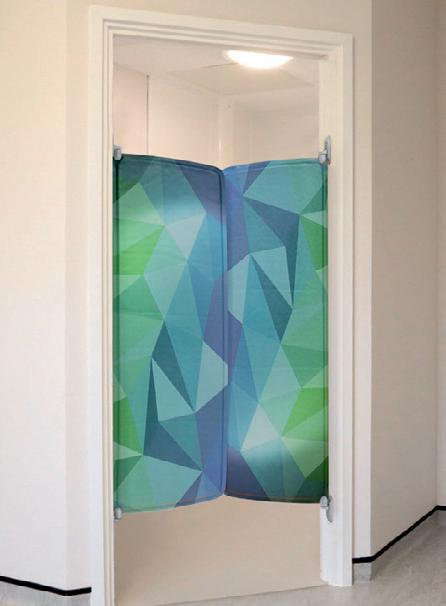
The ISSA Cleaning & Hygiene Expo is returning to Melbourne on 1–2 November 2023. Hosted by ISSA, the worldwide cleaning industry association, the event is set to showcase the latest advancements in the cleaning industry, together with a comprehensive education program and the 2023 INCLEAN Excellence Awards.


The highly anticipated ISSA Cleaning & Hygiene Expo will return to the Melbourne Convention & Exhibition Centre on Wednesday 1 November and Thursday 2 November 2023.
This two-day, free-to-attend event will bring together leading experts, innovators, and cleaning professionals.
Hosted by ISSA, the worldwide cleaning industry association, the event, which is in its fifth edition, is set to showcase the latest products, services, and innovations from more than 90 leading exhibitors.
“The industry is excited to return to Melbourne and it’s set to be the largest event to date,” stated Lauren Micallef, ISSA Oceania Manager. Earlier this year, ISSA managed to acquire additional hall space to meet the growing demand which included a mix of new exhibitors as well as past participants taking up bigger and grander stands.
Visitors are set to benefit from the 33% increase in hall space, as they will be able to explore a wider range of products and services and engage with even more industry experts and professionals.
“Where else in Australia can you meet with so many leading manufacturers, distributors and wholesalers in one location, demonstrating their innovations and sharing their industry insight,” said Stuart Nicol, ISSA Oceania Advisory Council Chair.
Craig Dowell, Director of Sales and Marketing, ABCO Products, said, “We look forward to the show returning to Melbourne and being able to provide technical advice and support on products and services that will empower not only the cleaners and companies but also the community.”
Last year saw a 25% growth in ISSA Cleaning and Hygiene expo attendees with visitors stemming from over 20 countries. This year the show anticipates over 3000 attendees from contract cleaners, facility and building managers to healthcare and aged care representatives, as well as individuals from the government and education sectors.
Adam Baker, National Marketing Manager, Makita Australia, platinum sponsor for the event, said, “The show provides a unique opportunity for the entire market to connect, foster relationships and uncover the latest innovations and insights.”
“Businesses that move quickly to adopt these latest trends and insights will have a competitive edge in their markets,” added Micallef.
Dr. Gavin Macgregor-Skinner, Senior Director, Global Biorisk Advisory Council (GBAC), a division of ISSA, highlights that a key trend in the market is ‘cleaning for health’ and that he expects it be a significant discussion point throughout the show and one he will be addressing throughout the education program. “Cleanliness is not just an aesthetic quality,” he notes. “It is a foundational pillar of infection prevention and occupant safety. It’s about being able to use cleaning and disinfecting equipment, tools, processes, and chemistries to battle the invisible infectious diseasecausing agents, contaminants, and pollutants.”
The Expo’s education program will take place over two days and feature 40 speakers, 16 free-to-attend speaker sessions plus onsite workshops.
It will cover a variety of topics that have been designed to provide attendees with the knowledge and tools to grow their business, develop their staff and remain up to date with industry trends and emerging developments.
A variety of panel discussions between industry thought leaders and stakeholders will expand the number of professionals that the audience can tap into on topics such as cleaning for health, infection prevention, technology and innovation, environmental and sustainability needs, supply chain and workforce development.
In addition to the exhibition and education program, the Expo will also feature the 2023 INCLEAN Excellence Awards. These awards celebrate the latest innovations and recognise outstanding achievements of people who work in the industry. “Last year the awards received the largest number of entries to date, and we are expecting 2023 to be even bigger,” mentioned Micallef.
Awards finalists will showcase their products in the “Innovation Zone” on the show floor of the ISSA Cleaning and Hygiene Expo, allowing visitors to view the products and uncover more about these innovations.
This year’s event is a must-attend for anyone interested in advancing their knowledge and expertise in the cleaning sector. Attendees can connect with their peers, learn from experts, and discover the latest trends and innovations that are shaping the future of the industry.
To register for the ISSA Cleaning & Hygiene Expo in Melbourne, visit www.issacleaninghygieneexpo.com.
For general enquires, please call 1300 789 845 or email info@interpoint.com.au. To find out more about exhibiting and sponsorship opportunities, please contact Samantha Ewart on (612) 8586 6106 or email sewart@incleanmag.com.au
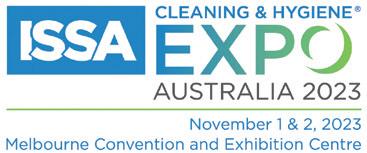
An event not to be missed!
Transform Healthcare Cleaning and Hygiene Practices
Capitalising on both of its international and local resources, ISSA, the worldwide cleaning industry association, will be putting together a two day industry event. The industry’s leading manufacturers, distributors and wholesalers will come together for information sharing, education, relationship building, cutting edge technology and product innovation.


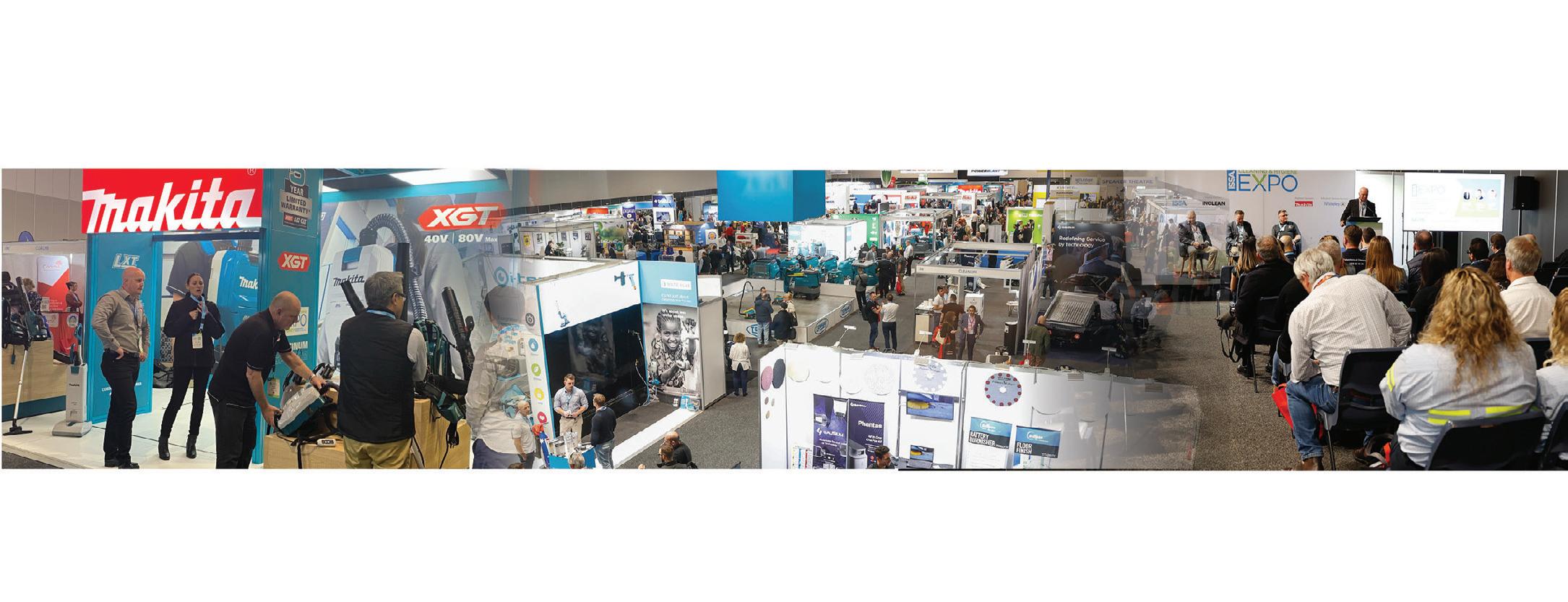


This event is a must-attend for healthcare facility managers committed to providing the highest standards of cleanliness.
• Cutting edge products and innovative services








• Local and international exhibitors

• In-depth education sessions and workshops.



AUSTRALIA’S ONLY DEDICATED CLEANING AND HYGIENE EVENT
Call 1300 789 845
04:45 My husband’s alarm goes off and he wakes me up to get in the shower first. I then make the kids’ school lunches and we usually have breakfast together, before I head off to work for the day. I put dinner in the slow cooker as I’m not home until about 18:30.
05:30 Listen to podcasts on my hour-long drive to work.
Chelsea works as a registered midwife at Epworth Freemasons, working in maternity, across all areas including the birth suite, postnatal and the special care nursery. Chelsea had always wanted to be a midwife, but life opportunities led her to kindergarten teaching and disability support care before she decided it was time to return to university and fulfil her dream. She graduated Midwifery and joined the Epworth HealthCare as a graduate midwife in 2021, all while being a mum of 3 young kids. With a rotating midwifery roster, her days can vary. In the birth suite, Chelsea provides care to women labouring and guides them
07:30 Introduce myself to the families, and discuss any queries they have about the day ahead. I complete my discharge observations so I can finalise any paperwork and provide education and wound care to my patients. I discuss how a baby is feeding, ensuring the mother feels confident before they head home.
08:00 Take observations and administer morning medication to patients. I chat to my patients to check how they are feeling and if they need to debrief about their birth. I check if a baby is due for a bath and administer a newborn blood spot screening test or weight check.
10:30 Another patient called as their baby was waking for a feed and was due for her newborn screening test and a baby weigh. The newborn screening test is performed on babies around 48 hours of age and it screens for a whole range of rare, but serious medical conditions. I weigh the baby prior to the test. We expect the baby to lose some weight during this time (it can lose up to 10% of its birth weight) and we implement a feeding plan to minimise further weight loss. This baby’s weight loss is in the normal range. I like to do the newborn screening test on the baby while it’s feeding so the baby is relaxed and comforted.
06:30 Arrive at work. I like to be early as sometimes the traffic can be heavy, or I get to work and there may be a change to the area I will be working in. Today, I’m on the postnatal ward. I check my patient allocation and use any extra time to review the histories of my patients to see if there is anything extra I may need to know. I also ensure medication is ordered for any patients going home today.
07:00 I receive a handover from the nightshift midwife. We review charts and discuss babies feeding and any concerns or plans required for the day. I make a rough plan for my day before heading in to meet my patients.

09:30 Time for a quick break.
09:00 After discharging a woman, I strip the room and get it ready for the cleaning staff. I set up another room ready for my patient to come from theatre, after her caesarean. We supply nappies for the baby and every mother receives an Epworth Maternity “Welcome to the World” gift box on admission to their room.
09:45 One of my patients is ready to bath her baby before he is due to feed. We have baths on wheels that we take into a patient’s room. I really enjoy spending this time with families, as it is a good opportunity to provide education and help build parents’ confidence and ease their nerves. Today, this baby really enjoyed the bath and was very relaxed. I help the mother with breastfeeding.
11:00 I receive a call from another mother requiring assistance with hand expressing as her baby was too sleepy to latch to the breast. This is a good time to discuss feeding cues, settling techniques and answer any other questions parents may have.
safely and comfortably through labour and birth. In postnatal care, she assists women and families to learn how to care for their new baby, including breastfeeding, baby bathing and settling techniques, while ensuring both mum and baby are recovering well from birth. In the special care nursery, Chelsea provides care and support to premature or unwell babies and their parents.
Chelsea’s passion for midwifery is based on supporting and empowering women and families during this special time in their lives. She recently received the Excellence in Quality Improvement or Research Practice award as a part of the Epworth HealthCare Nursing and Midwifery Awards 2023.
Chelsea loves building rapport with her patients and seeing them grow in confidence. Working in different parts of maternity, she often looks after families at different stages of their journey.

12:00 Theatre calls and my patient is ready to come to the room after her caesarean section. I receive handover from the recovery nurse and midwife. I orient the family to the room, then check the patient’s vital signs and blood loss every 30 minutes. I spend time helping with baby’s first breastfeed and skin-to-skin time with mum. When she’s finished, I support dad to dress the baby and have his own cuddles.
13:30 I give handover to the midwife in charge and have a quick lunch break.
15:00 My shift finishes and I head home. I value this driving downtime before the chaos of afterschool activities commences with my family!
16:00 Netball training for my youngest daughter. I do homework with my other daughter while her sister trains.
16:45 Netball training for my other daughter begins.
17:00
Head to the school to collect my son from his production practice.
17:15
Drop my son at his football training.
18:15 Collect my son from footy training and I finally head home to organise dinner.
19:00 My husband gets home from work and I head to the netball committee meeting.
13:00 We offer a ‘hospital in the hotel’ program and one of my patients is due for a transfer. I help the family pack up their belongings and phone the Park Hyatt hotel when the family is ready. A Park Hyatt car arrives and I help place baby in the capsule.
14:15 I finish writing my notes and ensure all documentation is updated before getting ready to go home.
14:00 Afternoon staff arrive and we give bedside handover with each patient.
15:45 I pick up my girls and head to netball training.
17:30 Head back to netball to collect my girls.
21:00 Get home from the netball meeting and get everyone’s uniforms organised for the next day, before heading to bed!
A Day in the Life is a regular column opening the door into the life of a person working in their field of health care. If you would like to share a day in your working life, please write to: hh@wfmedia.com.au
A well maintained, fit-for-purpose medical gas reticulation system is critical to a healthcare facility’s ability to deliver reliable and safe patient care. However, hazards in the system can be easily overlooked, potentially compromising reliable and safe operation of the facility.
Common medical gas system hazards within a healthcare facility can include:

• Outdated gas cylinder manifolds that no longer comply with safety design standards.
• Unmaintained or non-compliant medical air plants, compromising reliability of supply and delivering poor-quality medical air.
• Insufficient pipeline and instrumentation drawings, increasing the difficulty of troubleshooting and repair of the medical gas system.
• Non-compliant cylinder storage or cylinder segregation resulting in fire and asphyxiation hazards.
Drawing on over 60 years’ experience of providing medical gas solutions and support, BOC has developed QI® Risk as a proactive approach to manage the safety, reliability and compliance of medical gas reticulation systems.
QI Risk is a comprehensive medical gas pipeline and operational assessment package involving a thorough inspection, risk assessment, detailed reporting and recommendations by one of BOC’s medical gas reticulation experts; giving your healthcare facility the insight required to ensure safe and reliable operation of the complete medical gas reticulation system.
BOC will work closely with you to tailor the scope of the QI Risk assessment package to meet the
»
specific requirements of your healthcare facility — this assessment can include all or part of the following areas:
• Liquid oxygen supply.
• Cylinder storage.
• Manifolds and manifold rooms.
• Medical gas alarm systems.
• Plant rooms, medical air and medical vacuum plants.
• Medical gas reticulation.
• Department, ward and theatre medical gas infrastructure.
• Medical gas training, policies and procedures.
• Safety regulatory requirements.
BOC can assist in the design, supply and fitting of medical gas infrastructure, equipment and maintenance; developing best practice solutions specific to a healthcare facility’s needs and assisting in maintaining compliance and accreditation within current regulatory standards.
For more information call us on 1800 050 999 or email healthcare@boc.com or visit www.boc-healthcare.com.au
BOC is a trading name of BOC Limited, a subsidiary of Linde plc. © BOC Limited 2020. Reproduction without permission is strictly prohibited. Details given in this document are believed to be correct at the time of printing. Whilst proper care has been taken in the preparation, no liability for injury or damage resulting from its improper use can be accepted.
The idea of ‘gut health’ seems to be everywhere, but the popularisation of ‘gut health’ by food industry and popular media appears to have overtaken what we actually know from science, writes Dr Georgina Williams*.
The past 20 years have seen rapid scientific advances in our knowledge of the gut, including an ever-increasing awareness of the bugs that live there, known as our ‘microbiome’.
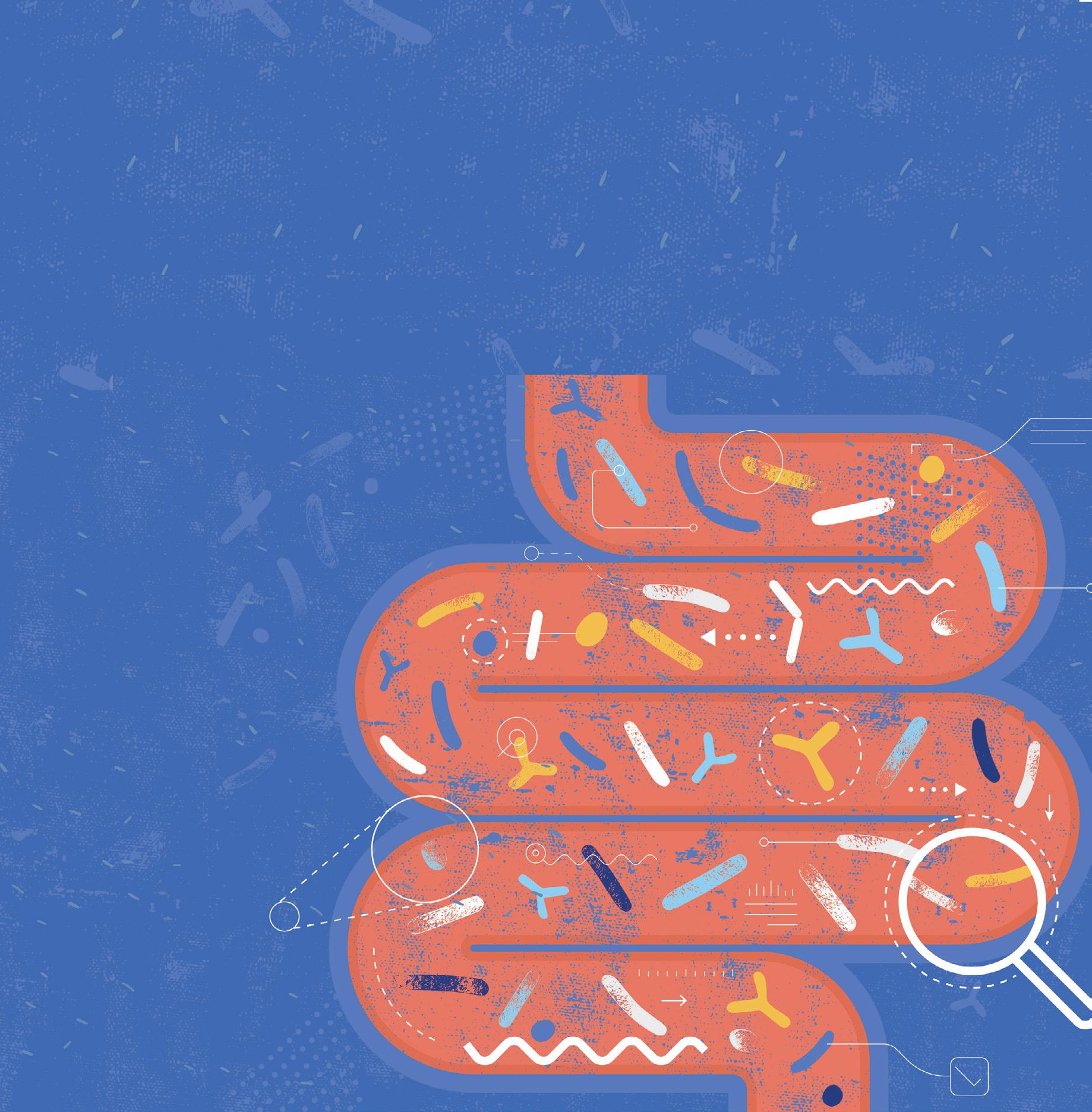
Despite this, scientists are still trying to understand what ‘gut health’ really means, and it appears to be much more complicated than we first thought. We know that certain types of gut microbes and their actions may benefit health; however, each individual’s gut health likely looks different and is influenced by genetics, diet and environmental factors such as whether we own a pet or spend time in nature. For health professionals, the promise of being able to work with clients to improve
gut health, particularly by altering the gut microbiota, is exciting, with better gut health associated with benefits across many physical and mental health conditions. Despite this, it does not seem that increased consumer and scientific interest in gut health has yet resulted in substantial practice change. We wanted to understand this disparity between science, health professionals (specifically dietitians) and consumers.
As diet is recognised to substantially influence gut health, we conducted research focusing on dietitians’ perceptions of gut health. We hoped this would improve our understanding of how we can make sure research investigating relationships between diet, the microbiota and health provides outcomes that are useful to health professionals in practice.


Our conversations with dietitians revealed that this group consider gut health to include both gut symptoms and gut microbiome characteristics. Despite this, dietitians reported their main aim when working on gut health with clients is to improve symptoms, rather than goals specifically related to gut microbes. Current dietetic gut health management was reported to be strongly evidence based, personalised and multidisciplinary, with dietary recommendations primarily aligned with the Australian Dietary Guidelines.
Dietitians reported this strong emphasis on evidence-based practice limited their current engagement with gut microbiome specific practice, as dietitians reported diet-microbiome evidence can be difficult to keep up with and interpret, with limited translational outcomes. Importantly, dietitians recognised they could play an integral role in gut health research and health practice; however, they stressed the implementation of this would require specific evidence-based practice guidelines.
Importantly, these findings highlighted that diet-microbiome research that is focused on translational outcomes is essential to enabling dietetic practice relating to the gut microbiome. Whilst there is an abundance of publications aiming to find correlations between diet, the microbiome and health, often these do not use a nutrition professional in study design or analysis, and so translation is limited due to irrelevant or incomplete dietary data. It is essential that nutrition professionals are involved in this research area to ensure nutrition-related interventions are realistic, analysis is appropriate and findings can be applied in practice.
Consumers interviewed in this study reported they found scientific literature confusing and were unsure of the transparency or recentness of government dietary recommendations. Therefore, health professionals are an essential interface between science and client education, and so outcome-focused research that supports the development of practice guidelines is crucial.
Consumers reported turning to social media for health advice and education, especially as they could access seemingly more upto-date recommendations in an engaging manner, including videos and graphics that explained how and why a dietary recommendation is made. Social media can be rife with misleading information; however, dietitians are well placed to stand above this noise and use social media as a tool to translate science-based dietary recommendations that consumers can trust, whilst advocating for health professionals as a voice of authority in this space.
Until exact understandings of dietmicrobiome interactions exist, dietitians reported that their practice in gut health would continue to focus on aligning clients’ diets with the Australian Dietary Guidelines.
Dietitians were aware that fibre-rich plant foods (eg, fruits, vegetables and wholegrains) are beneficial to the gut microbiome (known as prebiotic) and reported that recommendation of these foods is already routine due to existing well-recognised health benefits such as cardiovascular health. This approach to dietary management of gut health was different to what was reported by consumers.
Consumers considered diet to be highly influential in shaping their gut health; however, they attributed this mostly to fermented foods (eg, kombucha, kefir or sauerkraut) or probiotic-rich foods or supplements. This is not surprising as these foods are often marketed as being great for gut health and consumers had reported hearing of gut health mostly on social media or food advertising. Although there is evidence that both probiotic-rich foods (foods that contain live bacteria) and prebiotic-rich foods (foods that feed the bacteria) may have gut microbiota specific benefits, precise recommendations regarding how often and how much needs to be consumed remain uncertain.
Prebiotic foods, however, are well known to be beneficial across a broad range of health

conditions and are strongly encouraged in national dietary guidelines, as well as often being convenient, affordable and familiar options. Current adherence to dietary guidelines in Australia is extremely poor.
Consumers in this study considered gut health to be important to their ‘overall wellbeing’ and reported being motivated to make dietary changes to improve gut symptoms. This suggests that engaging with current consumer interest and encouraging diverse fibre-rich diets as a way to improve gut health may provide an opportunity to improve dietary guideline adherence and benefit a myriad of population health areas. Health professionals are well placed to interpret and use science to improve client health. Whilst scientific evidence supporting how specific diets, foods and nutrients may influence gut health is still evolving, dietitians have an opportunity to engage with consumer interest in this space to support health based on what is known so far, and to advocate for their increasingly essential role as experts in diet-microbiome research and practice.
Professor Eleanor Beck and Professor Linda Tapsell contributed to the research referenced in the article.
1. Williams GM, Tapsell LC, Beck EJ. Dietitians’ perspectives on the role of dietetics practice in ‘gut health’. Nutr Diet. 2023;80(1):95-103. doi:10.1111/1747-0080.12778
2.Williams GM, Tapsell LC, Beck EJ. Gut health, the microbiome and dietary choices: An exploration of consumer perspectives. Nutr Diet. 2023;80(1):85-94. doi:10.1111/1747-0080.12769
*Dr Georgina Williams is an accredited practising dietitian and postdoctoral researcher in diet and gastroenterology at the NHMRC Centre for Research Excellence in Digestive Health. Her current research examines the role of the diet in gastrointestinal disease, with a focus on dietmicrobiota interactions. Williams completed a Bachelor of Nutrition and Dietetics from the University of Wollongong(UoW) in 2017 and was awarded PhD from the UoW in 2022. She has worked as a dietitian across both public and private sectors.
In recent years, the healthcare industry has experienced an unprecedented digital shift driven by technology innovations, remote work, and telehealth culture, and in turn increased cyber threats.
The shift to online health services has required healthcare providers to upscale their digital backend systems and prioritise identity security strategies — with a heightened focus on compliance and cybersecurity requirements — especially considering healthcare is the top industry for cyber breaches in Australia, according to the OAIC.
In fact, SailPoint’s 2023 Identity Security in Healthcare Report shows 93% of organisations experienced a breach in the last two years, with operational downtime being the most common impact at 43%. Nearly all respondents (97%) agreed their organisation’s ability to manage access to sensitive data needs improvement, despite having specific measures in place already, such as data encryption.
According to the OAIC 2022 Data Breach Report, 59% of all cyber incidents recorded are due to compromised or stolen credentials — yet the same percentage of all respondents from the 2022 IBM Cost of a Data Breach Report didn’t have a zero trust approach in place.
A data breach causes almost an instant reduction in share price by 5% for publicly listed Australian companies, with loss of business, customers and reputational damage amongst other costs associated with managing a breach, per a Ponemon Institute study.
Recent events serve as potent reminders of the very real risks cyberattacks pose to the healthcare sector. The Australian Prudential Regulation Authority (APRA) mandated a large health insurance provider to set aside $250 million as insurance against issues linked to a serious breach, emphasising
the high costs associated with inadequate cybersecurity measures.
These challenges are echoed by Amanda Cattermole, CEO of the Australian Digital Health Agency, who recently joined me on a podcast. She stated, “A recent OAIC study shows that 70% of Australians still see privacy as a major concern. Cyberattack horror stories or data breach headlines in the news do not help this perception. If we want to build on the trust factor or assurance factor, we simply need to try to reduce the data breaches by preventing internal access from falling in the wrong hands.”
To prevent bad actors from gaining and elevating their access rights whilst going unnoticed within the network, the industry needs to implement a user-centric approach by placing a ‘firewall’ around each individual.
The ability to proactively mitigate escalating digital risks is critical. It’s key to implement a robust identity security strategy to reduce risk by monitoring access privileges and providing users with only the necessary access, simplify complex compliance requirements, and enhance the security and efficiency of operations.
Healthcare identity management is no small feat. It involves securing individuals with one-to-many roles, derived from multiple authoritative sources, and spanning complex user populations. Manual processes simply cannot meet the scale and complexity of these challenges. That’s where AI-driven identity security comes in.
With AI-driven, SaaS based identity security, healthcare organisations get continuous, 360-degree visibility into all user types and their related access across all connected systems, allowing controls to be put in place to govern all SaaS access, and to spot and defend against threats in real-time. This, in turn, enables healthcare organisations to accelerate digital transformation, and confidently manage and integrate all digital identities, assigned entitlements, and applications, creating a holistic identity security ecosystem.
Looking ahead, the rapid digitisation of healthcare calls for an identity security strategy that is advanced, agile, and comprehensive. As the threat landscape continues to evolve, identity security must be at the core of safeguarding data, networks, and patient privacy.

» For more information visit SailPoint www.sailpoint.com

Researchers have developed a test to reveal a pathogen’s resistance to antibiotics using a magnetic field and chemiluminescence.
The test was developed to speed up the diagnostic process for patients with sepsis. The staphylococcus bacteria can cause life-threatening blood poisoning and is fatal in up to 40% of cases, according to researchers from Empa. When sepsis arises, it is vital that the pathogens are identified as quickly as possible and appropriate antibiotics selected for treatment.

This is particularly crucial for the survival chances of those affected, as
Staphylococcus aureus strains can be insensitive to various antibiotics.
“If the bacteria in a blood sample first have to be cultivated for a diagnostic procedure, valuable time is lost,” explained Qun Ren, group leader from Empa’s Biointerfaces lab in St. Gallen.
Ren and her colleague Fei Pan worked with researchers from ETH Zurich to find a way to bypass this lengthy intermediate step.
The team developed a method using magnetic nanoparticles that can bind to staphylococci. The bacteria can thus be specifically detected via a magnetic field. In a next step, the sensitivity to antibiotics is analysed using a chemiluminescence method. If resistant bacteria are in the test tube, the sample emits light. If the germs can be killed with antibiotics, the reaction vessel remains dark.
“All in all, the sepsis test takes around three hours — compared to several days for a classic cultivation of bacterial cultures,” Pan said.
Pseudomonas aeruginosa can cause urinary tract infections which can develop into sepsis. These pathogens are also often resistant to a number of antibiotics.
The magnetic nanoparticle method can be tailored to many different types of bacteria, similar to a modular system. In this way, Empa researchers were able to develop a rapid ‘sepsis sensor’ based on magnetic nanoparticles. In samples containing artificial urine, the method reliably identified the bacterial species and determined possible resistance to antibiotics via a chemiluminescence reaction.
So far, the researchers have evaluated their magnetic nanoparticle kit for sepsis and urinary tract infections using laboratory samples.
“In a next step, we would like to validate the sepsis tests together with our clinical partners by evaluating patient samples,” Ren said.
Whether in a hospital, clinic or doctor’s practice — clean compressed air is essential in the medical sector. The main uses of medical compressed air include:
• driving ventilators and incubators, where it provides uncontaminated and controlled air flows helping to reduce high concentration of oxygen exposure;
• as a carrier gas for anaesthetic agents;
• as a power source for powering surgical tools in the operating room.
The type of air used in hospitals and healthcare facilities needs to be free of contamination and particles and have no oil or odours.
When picking a compressor for your application, you’ll need to choose between two basic options: oil-injected and oilfree. If you’re new to the world of air compressors, you may be unfamiliar with the differences.
The fundamental difference between the two lies in how the inner moving components, which draw in air and compress it in a storage tank, are lubricated. Oil-injected compressors, as the name implies, use oil to lubricate the pistons. In oil-free compressors, however, the cylinders are instead coated with Teflon and therefore do not need to be lubricated.
These air compressors do not need oil, which eliminates the additional time and money you’d otherwise spend on procuring and applying lubrication to your machines.
Oil-free and oil-less air compressors are the preferred method in supplying air, because it is the simplest, safest and most cost-effective solution. In the past, oilbased air compressors have been known to suffer system failure due to the corrosion of lubricant and the dispersal of oil into compressed air. As a result, most hospitals have switched to oil-free air compressors, which are not prone to breakdowns stemming from oil-related issues.
Oil free air compressors are also used in the dental industry. These compressors power the suction system that is used to remove water, saliva, and other fluids from the mouth during dental procedures.
Compressed air for the medical industry is a power source that not everyone thinks about or realises how important it can be. But properly managed medical compressed air saves lives every day.
Anest Iwata Australia has been supplying premium quality spray equipment and air compressors to the local market for more than 50 years, and is backed by the global Anest Iwata Corporation, which has been making compressors since 1926.
Anest Iwata pioneered and patented the Oil Free scroll compressor technology that delivers Class Zero air to Hospitals, medical, dentistry and research laboratory facilities around the world.
Anest Iwata oil free compressors are ecofriendly, have a clean drain and the piping does not contaminate so you can trust that the vital, oil free air will be pristine. Anest Iwata oil free compressors are available in sizes ranging from 2.2 kW single air end units to multistage 30 kW machines that are capable of servicing complete locations.
Along with the supply and installation of the hardware, Anest Iwata Australia offers servicing, repair and maintenance of your equipment which protects your investment.

Anest Iwata Australia’s highly skilled expert technicians have the skills, tools and parts to carry out programmed servicing and maintenance as well as offer a 24/7 breakdown repair service. Giving you piece of mind that your equipment will be running at peak efficiency letting you breathe easy.

Researchers from the Quadram Institute and University of East Anglia (UEA) have identified what makes some strains of gut bacteria life-threatening in preterm babies.
It is hoped the findings will help identify and track dangerous strains and protect vulnerable neonatal babies.
A major threat to neonatal babies with extremely low birth weight is necrotising enterocolitis (NEC). Rare in full-term babies, this microbial infection exploits vulnerabilities destroying gut tissue leading to severe complications. Two out of five cases are fatal.
One bacterial species that causes especially sudden and severe disease is Clostridium perfringens. These are common in the environment and non-disease-causing strains live in healthy human guts.
Prof Lindsay Hall and Dr Raymond Kiu from the Quadram Institute and UEA led a major study on C. perfringens genomes from preterm babies, including some babies with necrotising enterocolitis, and published their results in Nature Microbiology
The research team analysed C. perfringens genomes from the faecal samples of 70 babies admitted to five UK Neonatal Intensive Care Units (NICUs).

Based on genomic similarities, they found one set had a lower capacity to cause disease. This allowed a comparison with the more virulent strains.
The less virulent group lacked genes responsible for production of a toxin called PFO and other factors needed for colonisation and survival.
This study has begun to construct genomic signatures for C. perfringens associated with healthy preterm babies and those with necrotising enterocolitis.
Hall, from UEA’s Norwich Medical School and the Quadram Institute, said, “Exploring genomic signatures from hundreds of Clostridium perfringens genomes has allowed us potentially to discriminate between ‘good’ bacterial strains that live harmlessly in the preterm gut, and ‘bad’ ones associated with the devastating and deadly disease necrotising enterocolitis.
“We hope the findings will help with ‘tracking’ deadly C. perfringens strains in a very vulnerable group of patients — preterm babies.”
Larger studies across more sites and with more samples may be needed, but this research could help identify better ways to control necrotising enterocolitis.
When the team previously worked alongside Prof Paul Clarke and clinical colleagues at the Norfolk and Norwich University Hospital NICU, they demonstrated the benefits of providing neonatal babies with probiotic supplements.
The enterocolitis gut microbiome of neonatal infants is significantly disrupted, making it susceptible to C. perfringens overgrowth.
Hall said, “Our genomic study gives us more data that we can use in the fight against bacteria that cause disease in babies — where we are harnessing the benefits of another microbial resident, Bifidobacterium, to provide at-risk babies with the best possible start in life.”
Kiu said, “Importantly, this study highlights whole genome sequencing as a powerful tool for identifying new bacterial lineages and determining bacterial virulence factors at strain level which enables us to better understand disease.”
This research was supported by the Biotechnology and Biological Sciences Research Council, part of UK Research and Innovation (UKRI); and the Wellcome Trust.
The study was led by researchers at Quadram Institute and the University of East Anglia, in collaboration with colleagues at Imperial College, London, the University of Glasgow, the University of Cambridge, Newcastle University and Northumbria University.


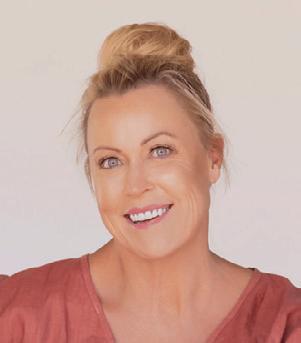




The Australian Institute for Infectious Disease (AIID) is a step closer with the project unveiling the building design and location for the project.

The new $650 million project aims to bring the nation’s scientific and medical research minds together to provide a rapid, coordinated response to current and future pandemics.
The AIID is an initiative of the Founding Partners — University of Melbourne, the Doherty Institute and Burnet Institute, with the Victorian Government as Major Supporting Partner.
The AIID building, designed by Australian architectural firm Wardle and engineered by international engineering firm Aurecon, has been specifically designed to foster collaboration and innovation between the Foundation Partners, industry and an alliance of Victorian infectious disease organisations. Also announced was the location of the AIID’s new home — occupying the area of 766–780 Elizabeth Street and 213–223 Berkeley Street in the Melbourne Biomedical Precinct and physically connecting to the Doherty Institute across multiple storeys.
The AIID will focus on genomics, diagnostics, therapeutics, vaccine research, clinical trials and data and public health research to inform decision-making. These focus areas will be supported and enabled by high-tech facilities within the new building, including:
• A human infection challenge unit designed to accelerate the development of new medicines and vaccines for key partners and industry clients, through high-quality and ethical clinical research.

• Robotic biobanking, allowing remote treatment and storage of biomedical samples from large clinical trials, enabling more efficient and safer storage and retrieval than traditional methods.
• One of the largest high-containment PC3 (Physical Containment level 3) laboratory facilities in the Southern Hemisphere, enabling identification, isolation and characterisation of new viruses and other infectious disease agents.
• A combination of specialist and flexible PC2 (Physical Containment level 2) laboratories, allowing the development of new vaccine technologies such as mRNA.
• Industry engagement spaces to create an innovation-focused entrepreneurial environment that supports the translation of promising discoveries into the successful commercialisation of medical products and services to deliver patient benefit.

• Convergence zones, enabling collaboration between the Foundation Partner organisations through meetings, shared amenities, training, workshops and incidental conversations in social areas.
• Purpose-designed spaces to support public health research including dry laboratories, interview rooms and spaces for community engagement and co-design work.
Demolition of the existing buildings on the site will be undertaken in 2024, with construction to commence in 2025.
The new building will allow the University of Melbourne and the Doherty Institute to expand and Burnet Institute to relocate its headquarters.
University of Melbourne Vice Chancellor Professor Duncan Maskell said, “We are thrilled to reveal the plans for the new AIID building. It will be an iconic addition to the world-leading Melbourne Biomedical Precinct and will equip us with the facilities and resources we need to get ahead of the next pandemic.”
Doherty Institute Director Professor Sharon Lewin said the unveiling of the concept design will see the AIID project gain momentum and will inspire people who will be working in the facility.
Burnet Institute Deputy Director Professor Margaret Hellard said this is an exciting phase in the project, bringing to life the vision of a new state-of-the-art facility and the new home for Burnet Institute. “The relocation of Burnet Institute to the Melbourne Biomedical Precinct as a Foundation Partner of the AIID is an exciting opportunity that will strengthen collaborations across laboratory-based research and public and global health, and build our capacity to respond to significant global health challenges,” Hellard said.
A25-year-old Queensland woman diagnosed with severe endometriosis said a team of nurses who cared for her after undergoing surgery to treat the disease had inspired her to become an Enrolled Nurse (EN).
Zoe Little, originally from Kavieng in Papua New Guinea, recently graduated with a Diploma of Nursing through Mater Education after completing the 18-month course in facilities across Townsville and Brisbane.
Diagnosed with endometriosis in 2020, Little said she had spent years dealing with “painful disease” since she was a teenager.
“No one could tell me what was going on for so long,” Little said.
“After surgery to remove the endometriosis, I had a real appreciation for the nurses who became great support people for me during what was a vulnerable time.”
After completing the Diploma in December, Little gained direct entry to study a Bachelor
of Nursing at the Australian Catholic University (ACU) through Mater’s agreement with the institution.
“I wanted to extend on my knowledge as an EN to become a Registered Nurse (RN) with ACU,” Little, from Nundah on Brisbane’s northside, said.
Little said the Diploma “set her up for success” at university, and this year she started working on the orthopaedic ward at Mater Hospital Brisbane in South Brisbane.

“I was able to keep working as an EN while studying, and I absolutely loved that,” she said.
“It’s great because I learn something in class and can see it happen on the ward a few days later.
“Every day is different. Having that handson experience with patients who have been through hip and knee replacements is rewarding.”
Little said her dedication to her studies and passion for health care runs in her family.
“My mum is my biggest inspiration,” she said. “She’s worked in aged care for about 20 years. “It takes a lot to be a healthcare worker and you sacrifice a lot with the shift work; however, it is extremely rewarding to continue to show up for people every day.”
Little hopes to continue her career with Mater after graduating as a RN.
“I’ve been with Mater for a while as I started as an administration officer, worked as an Assistant in Nursing (AIN) and EN. I’d love to be an RN with Mater,” she said.
“Becoming an EN and getting that experience is incredibly valuable when becoming an RN,” she said.
Mater Education Townsville Team Lead Tara Walton said the agreement with ACU gives Mater’s Diploma of Nursing graduates direct entry into the university through a Bachelor of Nursing degree.
“This agreement allows for graduates to receive 12 months off their three-year course at ACU. They are credited the first year’s worth of subjects of their Bachelor due to studying with Mater,” Walton said.
“This means for our Diploma students, upon completion of the 18-month course, they can go and work as an EN, gaining valuable experience. Should they wish, they can go straight into a second year of their Bachelor of Nursing, taking with them the knowledge they have gained at Mater.
Mater Education offers placements at Mater facilities including Bundaberg, Rockhampton, Mackay, Brisbane and Townsville.
 Luke Zappara, Healthcare Regional Director, APJ, Claroty
Luke Zappara, Healthcare Regional Director, APJ, Claroty
Modern hospitals are laden with a complex network of machines and handheld devices. Their numbers have exploded in recent decades as new technologies have been developed and deployed for patient monitoring and treatment.
There have also been several instances of elevator malfunctions at hospitals leading to serious injuries, and even deaths, as a result of the elevator not being properly monitored.
BMS present two significant security problems. First, they often do not get the attention they need from security teams,
who are focused on protecting the more obvious cyber targets that lie within a hospital’s traditional IT infrastructure.
Second, BMS are often connected to the networks that support business-critical IT systems and can be exploited by criminals as an easy pathway into otherwise wellprotected systems.
Several of these vulnerabilities have been discovered by cybersecurity specialists and warnings issued. For example, in 2019 AusCert issued an alert about Optergy Proton, a web-based building interface device that combines building automation, energy management and facility management. It detailed multiple vulnerabilities, noting that successful

exploitation could allow an attacker to achieve remote code execution and gain full system access.

While Optergy Proton is a newer product, and a software update was made available to remove the vulnerability, remediation is anything but simple with older building management systems. Many of the legacy BMS being used in hospitals today were designed when cyber attacks weren’t as frequent or as sophisticated as they are now. Connectivity and security were not front of mind when developing these systems. Remediating vulnerabilities in older BMS is challenging at the best of times and often requires considerable downtime, which is not an option in a 24/7 hospital environment.
There are many tools available to help healthcare organisations better protect their BMS from cyber attacks. The best tools provide the following key functions: enhanced visibility, efficient vulnerability management and network segmentation.

Today’s BMS comprise many different subsystems using different communication protocols. This makes monitoring what is




happening in a BMS network extremely challenging. Network monitoring tools called parsers can analyse these multiple protocols and pass information to higherlevel networks. They greatly simplify the task of monitoring all the traffic flowing through the network of a BMS and identifying any potential vulnerabilities.


Vulnerabilities are a fact of life, in both BMS as well as OT/IT systems. While patching vulnerabilities is a necessary task, it can also cause significant disruption to critical operations by requiring operational downtime. Fortunately, tools are available that can identify vulnerabilities, inform how critical each one is and essentially triage them by prioritising the most critical vulnerabilities and balancing this with how much disruption it would cause to fix them.
In a healthcare facility, connectivity does not need to be universal: in other words, every machine or device does not require connection to everything else. Network segmentation restricts communication between all systems and devices to only those that require it. Security tools are available to facilitate this often-complex task of segmenting the networks and can

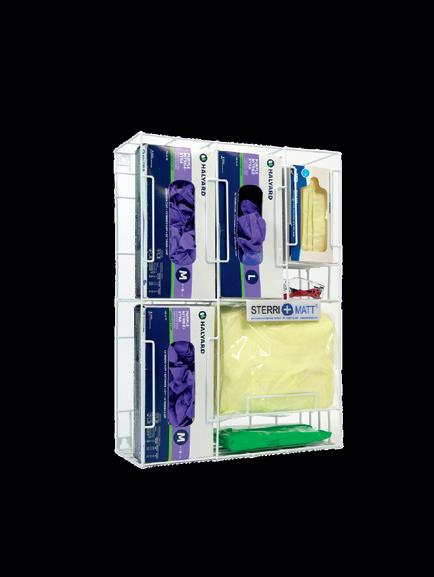
ensure that a compromise of one system does not give the attacker access to others. These tools can monitor all network traffic to first establish a pattern of normal behaviour and then raise the alarm when there is any deviation from this norm, which could indicate an attack.
Building management systems are the backbone of modern hospitals. They are directly responsible for securing and monitoring the infrastructure, resources and environment within a healthcare facility, yet they are often overlooked by cybersecurity teams as a weak spot. This can have serious implications, including the loss of highly sensitive data, or worse, impacts on patient safety.
While addressing the security weaknesses in BMS is a difficult task for many healthcare providers, maintaining patient access to medical services and safety is of far greater importance. Healthcare organisations must adopt a proactive approach to this risk, including implementing tools that enhance visibility, efficiently manage vulnerabilities and allow for network segmentation. This will not only secure their facility, but also help ensure patient safety and build deeper confidence in the healthcare system.
Through its ‘flight-simulator’ style technology, Vantari VR delivers medical training via a VR headset and laptop, allowing clinicians to perform and perfect clinical procedures, in accordance with their mission to eliminate medical error through standardisation in the delivery of training across the board.
Vantari’s platform allows ICU clinicians to practice procedures in a safe VR environment, honing their skill sets to conduct procedures according to best-practice guidelines.
Clinicians can master the procedural techniques as they become ingrained and embedded into their cognitive processes through repetition.
Vantari’s partnership with TQEH seeks to provide an insightful case study into the positive impact increased access to, and consistency of, training can have on the sector and on patients in Adelaide.
Senior Consultant of the Intensive Care Unit Dr John Raj said, “Historically, ICU clinicians have widely taken a 'see one, do one, teach one' approach, which leaves room for error if the procedure studied is not conducted
accurately. Not only does this pose a risk to the accuracy in which the clinician then goes on to perform the procedure, but also to those junior clinicians they go on to teach in the future.
“Standardisation of medical procedures in the ICU setting is extremely important in determining if a procedure is successful. For example, when clinicians are put in a central line, each professional possesses their own way of administering certain steps; however, ensuring ICU clinicians are trained in virtual reality environment aids in instilling standardised habits and stepby-step synchronisation practices when conducting surgeries.”
Last year, Vantari VR was found to reduce medical error by 40%, as part of a recent research program conducted in partnership with the University of Wollongong.


Vantari VR Co-Founder and Co-CEO Dr Nishanth Krishnananthan said, “It’s great to work with Dr John Raj and his team at TQEH as they join the journey to futureproof education and training. It validates the need for our platform in the SA health system and we couldn’t have found better ambassadors who share our vision.”
Recently, Vantari VR announced its first regional partnership in Australia with Latrobe Regional Hospital. It has also been integrated into Nepean Hospital in NSW, and Royal Perth Hospital and Fiona Stanley Hospital in WA. Looking ahead to 2023, Vantari has already achieved multiple partners in the US as it continues to expand globally, with rollouts to come in the UAE, India and Asia.
Innovation in the cardiopulmonary space is critical to the delivery of high-quality care to patients. While there have been noteworthy innovations in cardiovascular surgery in recent decades, there has been a need to elevate perfusion to drive greater efficiency, better intuition, improve support to perfusionists and improve surgical outcomes through patient-centred technology.
LivaNova, a market-leading medical technology and innovation company, has launched the Essenz™ Perfusion System in Australia following a broader rollout in other markets.
The entry of the Essenz Perfusion System into the Australian market signifies a historical milestone for LivaNova, who have been producing and servicing some of the world’s most successful heart-lung machines (HLMs) for the last four decades.
Alison Horton, Perfusion Manager at The Royal Melbourne Hospital, believes the new system represents innovation that supports better patient outcomes.
“Heart-lung machines are an indispensable part of cardiac surgery. Having innovative technology like the Essenz Perfusion System helps to unlock the potential of individualised care. We are excited to see Australia continue to set high standards in cardiac care,” said Ms Horton.
The Essenz Perfusion System is the result of a comprehensive user-centric design that puts the perfusionist at the heart of each step of the design, development, and deployment process to address and anticipate the needs of the New Era of Perfusion.
According to Richard Newland, Senior Perfusionist at Flinders Medical Centre, it is encouraging to see that manufacturers are becoming increasingly aware of the importance of human factors in the design of HLMs and want to prioritise what is important to perfusionists.
“This new perfusion system is based on decades of trusted partnership and collaboration with hundreds of perfusionists globally who participated and shared feedback during every step of design and development. This simple, yet effective approach to innovation ensures that any perfusionist, whether they have been part
of that process or not, will benefit from its modifications. For me it’s about the centralisation of information to avoid duplication and information overload, and this new system has taken this into account,” said Mr Newland.
The next-generation perfusion system bridges decades of proven performance with an enduring commitment to the safety of the patient and data accuracy. The latest system is rooted in data-driven decisions that improve clinical workflows and quality of patient care during cardiopulmonary bypass (CPB) procedures.
It is built on proven LivaNova S5 HLM’s reliability, with state-of-the-art safety precautions on both hardware and software. Each pump on Essenz is controlled individually for simple, straightforward operations. The Essenz HLM cockpit and Essenz Patient Monitor are connected but operate separately to further ensure reliability.

The Essenz Patient Monitor offers an intuitive user interface and continuously records and displays data and events together to assist the perfusionist throughout a procedure. Data is automatically and seamlessly transferred, minimising manual data entry and freeing up valuable time for the perfusionist.
It can be adapted to the individual needs of patients (adult and paediatric), workflows and users. It features an ergonomic design, including advanced cable management and a mast-mounted design that minimizes distractions and keeps the area clean and hygienic. The innovative cockpit provides one central view to control the device and check all perfusion and patient parameters.
The Essenz Perfusion System is backed by a responsive service team of dedicated, local engineers in more than 100 countries, along with a global support centre to address any needs.
Learn more about the entire Essenz Perfusion System on the LivaNova website: https://www. livanova.com/cardiopulmonary/en-us/essenz
Heart-Lung Machine
EU: Devices are intended to perform, control, monitor and support extracorporeal blood circulation replacing the mechanical pumping function of the heart, monitoring and regulating physiologic parameters during procedures requiring extracorporeal circulation.
Essenz Patient Monitor
The Essenz Patient Monitor software is a modularly structured software program package that is exclusively used with LivaNova heart-lung machines. The system allows detailed recording of perfusion data during cardiopulmonary bypass procedures. The data may be recorded automatically or entered manually. The LivaNova Perfusion System Monitor is a panel PC intended to be exclusively used with LivaNova heart lung machines as a base and user interface for the Essenz Patient Monitor software.
CONTRAINDICATIONS: No contraindications are known if the devices are used for the purpose described and in accordance with the stated operating conditions. Do not use the devices for any purpose other than indicated.
WARNINGS: The devices must be used in accordance with the instructions for use provided. For a complete listing of warnings please refer to the Instructions for Use. Medical intervention and therapeutic procedure must not be based solely on the Essenz Patient Monitor perfusion records (reports).
PRECAUTIONS: For a complete listing of precautions/ cautions please refer to the Instructions for Use. The devices should be used by qualified and skilled personnel, able to follow the indications and instructions for use contained in the information provided by the manufacturer. Not approved in all geographies. Please visit the LivaNova website to receive instructions for use containing full prescribing information including indications, contraindications, warnings, precautions and adverse events.
Legal Manufacturer:
LivaNova Deutschland
Lindberghstrasse 25
D-80939 Munich, Germany
»
For more information visit LivaNova Australia Pty Ltd www.livanova.com/en-us

Doctors can now access an AI-based decision support tool to assist in managing cardiac arrest patients.
Thanks to researchers at the University of Gothenburg, Sweden, appropriately skilled physicians can discover how thousands of similar patients have fared by entering relevant data in a web-based app.
Three systems of decision support have been developed and it is hoped that these may make a significant difference to doctors’ work in the future. The clinical prediction model, known as SCARS-1, is presented in The Lancet’s eBioMedicine journal and available to download free of charge from the Gothenburg Cardiac Arrest Machine Learning Studies website. The app accesses data from the Swedish Cardiopulmonary Resuscitation Register on 55,000 patient cases. The Gothenburg researchers used an advanced form of machine learning to teach clinical prediction models to recognise various factors that have affected previous outcomes. The algorithms take into account numerous factors relating to the cardiac arrest, such as treatment provided, previous ill health, medication and socioeconomic status.
Research head Araz Rawshani, a researcher at Gothernburg’s Sahlgrenska Academy and resident physician in cardiology at Sahlgrenska University Hospital, said, “Both I and several of my colleagues who treat emergency patients with cardiac arrest have already started using the prediction models as part of our process for deciding on the level of care.
“The answer from these tools often means we get confirmation of views we’ve already arrived at. Still, it helps us not to subject
patients to painful treatment that is very unlikely to be of benefit to the patient, while saving care resources.”
The model indicates whether a new patient case resembles previous cases and offers information about whether the previous patient had survived or died 30 days after their cardiac arrest.
The researchers said the model’s accuracy is unusually high. Based on the 10 most significant factors, the model has a sensitivity of 95% and a specificity of 89%.
The ‘AUC-ROC value’ (ROC being the receiver operating characteristic curve for the model and AUC the area under the ROC curve) for this model is 0.97. The highest possible AUC-ROC value is 1.0 and the threshold for a clinically relevant model is 0.7.
This decision support element was developed by Fredrik Hessulf, a doctoral student at the Sahlgrenska Academy and anaesthesiologist at Sahlgrenska University Hospital/Mölndal.
“This decision support is one of several pieces in a big puzzle: the doctor’s overall assessment of a patient. We have many different factors to consider in deciding whether to go ahead with cardiopulmonary resuscitation,” Hessulf said.
This form of support is based on 393 factors affecting patients’ chances of surviving their cardiac arrest for 30 days after the event, but 10 factors have been found to be most significant in predicting survival; the most
important was whether the heart regained a viable cardiac rhythm again after the patient’s admission to the emergency department.
The second decision support tool published, SCARS-2, has been presented in the journal Resuscitation and will be launched shortly. This tool is based on data from patients who survived their out-of-hospital cardiac arrest until they were discharged from hospital.
The predictive models are based on 886 factors in 5098 patient cases from the Swedish Cardiopulmonary Resuscitation Register. This tool, developed by research doctor Gustaf Hellsén, is partly aimed at helping doctors identify which patients are at risk of another cardiac arrest or death within a year of discharge from hospital.
It also aims to highlight which factors are important for long-term survival after cardiac arrest — an aspect of the subject area that has not been well studied.
“The accuracy of this tool is reasonably good. It can predict with about 70% reliability whether the patient will die, or will have had another cardiac arrest, within a year. Like Fredrik’s tool, this one has the advantage that just a few factors can predict outcome almost as well as the model with several hundred variables,” Hellsén said.
A third decision support tool, SCARS-3, is also planned and this will offer support for doctors treating patients who experience an in-hospital cardiac arrest.
Altera Digital Health is a global healthcare IT company, a member of the N. Harris Computer Corporation family, and one of the most prolific healthcare IT solution providers in Australia with hundreds of hospitals and care sites across Western Australia, South Australia, Victoria, New South Wales and Waikato, New Zealand — leveraging its technology to improve patient care.

Altera Digital Health, then known as Allscripts, entered the Australian market in 2010 when, after an extensive tender process, it was selected by South Australia (SA) Health to deliver an electronic medical record (EMR) solution across the state.
SA Health and Altera Digital Health have gone on to roll out what is arguably the most ambitious project of its kind in Australia — to deliver a connected community of health across the vast state. Fast forward to 2023 and SA Health is one of Altera Digital Health’s largest global Sunrise™ clients using prime solutions including Sunrise™ PAS, Sunrise EMR, Altera Patient Flow™ and Altera Opal.
The Sunrise platform in South Australia now has more than 7,000 concurrent users managing close to 3M registered patients and more than 20M patient visits. It is live at all metropolitan health sites positioning Adelaide as the digital health capital of Australia.
In 2016, Altera Digital Health had also acquired a small Adelaide-based healthcare IT company to add to its on-the-ground
manpower in South Australia. The company was known for a highly effective scanning solution operational in dozens of Western Australian and Victorian hospitals. This solution, now known as Altera Opal, continues to be deployed across Australia and indeed globally.
Altera Digital Health’s footprint then extended to Victoria where it was selected to deliver an EMR solution to the Gippsland Health Alliance (GHA) in late 2017. Altera Digital Health’s focus on innovation and its cloud partnership with Microsoft has enabled the GHA to benefit from the most contemporary solutions available globally, hosted on the Microsoft Azure cloud.
In December 2022, Altera Digital Health announced that the third phase of GHA’s EMR roll out had gone live with the Sunrise EMR clinical suite fully live across GHA’s major regional and subregional health services. The system is Australia’s largest EMR deployment on Microsoft Azure and incorporates 600 beds across five health services in total.

Another initiative born in 2017 was Project iRAD (integrated Real-time Active Data), of the South Western Sydney Primary Health Network, which is now pioneering open, connected health communities in Australia. Delivered through Altera Digital Health’s dbMotion™ Solution, Project iRAD solves the problem of scattered patient health information across many systems and
sites. It aggregates and harmonises patient consented data from Australian primary care clinical information systems, delivering the information clinicians need in a usable and actionable format at the point of care.
The project initiated in 2018 and has expanded across 70 health services in South Western Sydney and Western New South Wales. Information available within iRAD includes medications, allergies, pathology results, radiology, immunisations, conditions, encounters and more. The system has recorded and shared information relating to 15,500+ allergies, 60,000+ medications, 48,000+ conditions and 5,200+ procedures. Following the success of Project iRAD, in February 2023, Altera Digital Health was announced the winner of a competitive tender to deliver the Victorian Department of Health’s state-wide Health Information Exchange (HIE) solution, which will share health information across disparate systems for clinical care. The platform will initially provide hospital clinicians with a more complete view of a patient’s public pathology results with the option to expand to other clinical information.
Altera Digital Health has established itself as a leading health-tech innovator in Australia and New Zealand that can establish and grow long-term, meaningful relationships with its clients to bring next-level healthcare within reach.
au.alterahealth.com
The patient is at the heart of hospitals and healthcare organisations and good patient experiences are critical. Increasingly, healthcare organisations are investing in digital solutions to help transform their operations — both inside and outside of the physical operating room — in an effort to streamline processes, drive productivity and, ultimately, deliver improved patient outcomes and experiences.
Continued digital transformation is critical to the success of hospitals and healthcare organisations. Everything from communication to cybersecurity and administrative processes is being upgraded across the healthcare sector, as public and private organisations continue to evolve to keep pace with changing patient needs. For many organisations in the healthcare space, it’s essential to transform and upgrade systems and processes to deliver improved patient outcomes and experiences.
The most effective way to achieve this is to streamline processes and automate practices where possible to alleviate the burden on staff and empower healthcare workers to dedicate more time to what matters most — their patients — instead of towards cumbersome paperwork.
Like many other industries, organisations operating in health care can be
overwhelmed with paperwork relating to patients, visitors, guests, staff and contractors. This can create headaches for staff, especially when it comes to managing compliance and maintaining the safety and security of patients. One of the more cumbersome processes for hospitals and healthcare organisations can be the flow of people onsite and across sites, as hospitals and healthcare organisations experience high volumes of foot traffic.
Managing the movement of people across sites was a challenge that was especially prevalent during the pandemic. To eliminate the risk of errors in paper-based, manual sign-in and sign-out processes, many organisations turned to digital solutions during this time and invested in digital visitor access management solutions.
There are a multitude of reasons why digital visitor, contractor and staff access management solutions have emerged as a cure for the administrative burden associated with people movement for organisations in healthcare. These include:
1. Streamlined processes
The latest digital access management solutions make signing people in and out a breeze for hospitals and healthcare organisations. Modern, cloud-based solutions include features such as facial recognition, unlimited sign-in/sign-out, visitor photos and custom badge printing

for seamless contactless sign-in. Guests can also be pre-registered for an accelerated sign-in process.
Eliminating time-consuming, paperbased processes and replacing them with automated, digital access management solutions lets hospitals and healthcare providers create welcoming environments for visitors, contractors and staff without delaying their site access. This ensures that patients and other visitors can attend appointments and visit their loved ones quicker to ensure a better patient experience. At the same time, it also eliminates the need for dedicated staff to administer the sign-in and sign-out process, which ensures they can dedicate more time to looking after patients and enhancing the hospital experience.
2. Improved visibility
Digital access management solutions also ensure hospital staff can improve their access to records for improved compliance. For example, the latest cloud-based solutions include online portals, companion mobile apps, dashboard and emergency reporting, and SMS and email notifications to improve site communication with staff as well as provide enhanced visibility of visitors and contractors onsite.
Digital solutions ensure hospitals and healthcare organisations can improve their compliance by creating digital paper trails and
facilitating rapid access to accurate, up-todate information and records of every person on their site at any given time. This means that staff can run real-time reports in the event of an emergency or for auditing purposes and achieve a more holistic view of who is onsite at their locations at any given time.
3. Strengthened security
Hospitals and healthcare providers also benefit from being able to deliver more comprehensive safety and security measures onsite by leveraging digital access management solutions. Cloud-based solutions can be used to provide essential information to people on sign-in — such as policies, non-disclosure agreements and critical messages — to ensure every visitor receives the information they need in the event of an emergency. Additionally, they can be secured with single sign-on (SSO) processes and provide essential data privacy, which is critical for compliance in the healthcare sector. As cloud-based solutions, they can also be regularly and automatically updated with the latest organisation, industry and/or government regulations to ensure improved security and compliance. Digital access management solutions also let providers manage multiple sites from a

single, centralised online portal. They can be set up to manage access restrictions, providing an added layer of security onsite. This is critical to ensure the utmost level of care and protection to patient and visitor data and helps hospitals provide improved patient experiences and outcomes.

In a fast-paced environment focused on delivering essential care to those that need it most, every minute matters. Hospitals and healthcare providers must digitally transform their operations as much as possible to free up more time to deliver critical care. While investing in digital access management solutions may not immediately seem like an essential way to help patients, the flow-on effects are many, including the delivery of improved compliance, safety and security.
Modern digital solutions with the latest features empower healthcare providers to eliminate time-consuming tasks from their team members, reducing the administrative burden on staff and improving productivity without sacrificing on safety or security. Ultimately, this helps frontline workers continue to deliver essential care without getting caught up in cumbersome administration work.
When the Royal Adelaide Hospital approached us to update their AGV trolley delivery system in a live, 800 bed hospital, we were up for the challenge.
The Royal Adelaide Hospital’s (RAH) fleet of 25 Automated Guidance Vehicles (AGVs) are responsible for distributing food, linen, waste, pharmaceuticals and stores, 24/7 365 days. The AGV system controls 14 dedicated lifts and services 31 lobbies over 9 floors, including 44 CSSD operating suites.

The new flexible AGV control system offers many benefits, such as lower operating costs, reduced transport damage and consistent delivery times.
A hardware life cycle upgrade was required for the client’s existing fleet of 25 AGVs, located at the RAH. The existing AGV Control System also had limited support from the previous supplier. Technology had taken a significant step forward to a more modern, Window based, smart and easy to edit control software system. RA Health provided project consultancy from initial concept, through to design, implementation, and closure stages.
After the tender was accepted RA Health commenced the project, converting some of the AGVs hardware and the control system. More than 800 patients continued to rely on the AGV system all day and all night whilst the upgrade was carried out.
The hospital was required to maintain business as usual while the work was performed with
minimal disruption to normal operation. This challenging task was overcome by the RA Health and RAH project teams by developing a strategy to run separable portions in parallel during conversions to minimise manual labour support.
A risk assessment was carried out at the beginning of the project leading to all highrisk activities being mitigated through a prework strategy leading to almost no impact to the hospital’s day to day operation and all targets were delivered on time or earlier.
The solution was to convert 25 of the existing AGVs with the new MAXAGV hardware and control system while removing EOL equipment during the conversion. The project was performed in 2 separable portions to reduce overall risk to project CSSD and main hospital.
RA Health had a team of technicians from all over Australia, assist with the conversions and onsite commissioning assisted by MAXAGV either remotely or onsite during the duration of the project.
This was a 24-hour process to minimise the duration of the project and any inconvenience to the hospital.
The control system and information were recreated using the MAXAGV platform with new communication to existing equipment.
To reduce the impact on hospital operations, half the AGVs were converted and commissioned by a night shift team while the existing AGV system was not being used. This
Left: An AGV carries a bin away from one of the 31 busy lobbies.
Below: An AGV delivers a loaded trolley to the laundry.

meant there were two AGV systems running parallel with control methods implemented to allow this hybrid scenario.
The project implementation was very successful with the cutover reporting no issues or impact on hospital operations. The MAXAGV system is a state-of-the-art, dependable AGV Control System that runs on a modern client server Windows environment. Max Control System handles everything from transport and WMS warehousing, load tracking, buffering and order swapping to optimal dynamic route selection, location selection, charge control, priorities, and dead lock prevention — all shown in real time 2D & 3D visualisation.
The MAX Control system can make split second decisions along the AGV’s guidance path to select optimum routes to a specific destination and reallocation of missions, thus optimising efficiency. The Factory Acceptance Test (FAT) and Site Acceptance Test (SAT) were successful on the first attempt with no issues recorded. The flexible system can now be easily adjusted, routes moved, and traffic optimised by the RA Health team with technicians available Australia wide.
Those interested can watch the system in action by scanning the QR code below.

The mid-term review of the National Health Reform Agreement Addendum (2020–2025) (NHRA) — an agreement between the Australian Government and all state and territory governments to improve health outcomes for Australians — is underway. The National Rural Health Alliance (the Alliance) has, like many others, been asked to provide input.
A key point the Alliance made in the review was the need for investment in primary health care in rural, regional and remote areas, so that people receive preventative health care
and early diagnosis and treatment to ensure that they spend less time in hospitals.
This is well resonated in the recent findings by Nous Group, released by the Alliance, showing alarming statistics of the lack of funding to improving rural health care. The findings are based on the access of patients to health care.
The report, titled ‘Evidence base for additional investment in rural health in Australia’, reflects that despite the 1.4 times of high disease burden in rural populations, they experience a shortfall of $6.55 billion in
health expenditure, translating to $848.02 less expenditure per person, per year.
The findings are astounding and place a mirror on the rest of Australia and policymakers to ensure that people who live in rural Australia have access to the same health care that their urban counterparts enjoy.

Without the genuine partnership of the federal, state and local governments, as well as considerations for grass root developed
solutions — as envisioned by the NHRA — Australia will continue to have an inequitable healthcare system. It will be a system where 30% of Australia’s population is a secondclass citizen; receiving less, paying more (sometimes double or triple), purely because of the tyranny of distance, despite their economic contribution to Australia’s wealth.
We need a genuine and holistic approach to solve the rural health access crisis in Australia. Most people living in rural, remote and regional Australia are impacted by a triple disadvantage.
The Nous report shows that the number of in-hospital, non-admitted patient encounters that include procedural clinics, diagnostics and outpatient clinics, increases with remoteness, with remote and very remote regions experiencing an average of 1.92 encounters per person, compared to major cities at 1.27 encounters per person. This is partly because rural and remote communities often do not have access to primary care and may wait until their health becomes worse before they see a clinician.
In 2022, nearly 60,000 people living in Australia did not have access to general practitioner services within a 60-minute drive from their residence. The figures demonstrate that patients arrive for treatment at a tertiary stage of disease, rather than having had preventative health care earlier. As such, per-capita, age-standardised, non-admitted patient care expenditure increases with remoteness to reflect this higher use and cost of health service delivery.

In non-admitted patient care, rural populations experience higher emergency department encounters per 1000 people compared to urban (423 vs 309). Consistent with other hospital expenditure, per-capita, age-standardised emergency department expenditure increases with remoteness, as shown in Table 5 of the report. Rural Australians also receive less expenditure per capita for use of private hospitals. This figure declines significantly with remoteness despite a percentage of rural people paying private health insurance as a safeguard.
Rural health care at the community level must be viewed from a whole-of-system perspective, ie, within a multidisciplinary healthcare approach given the limited

resources, which allows locally led innovation and solutions which are not ‘withdrawn’ at the whim of policymakers or funders.
State and federal governments must work together with stakeholders at the local level, rather than communities being crippled by funding and governance mechanisms as well as red tape, which do not allow for planning that fits the community and geographic challenges and locally led options.
Rural communities need to see a commitment for real reform and funding of primary health care delivery and service access. It requires a willingness by governments to accept that rural primary care services need different models of funding outside of the city, to make them economically viable and functioning to meet community population health needs.
The Alliance noted in our response to the NHRA mid-term review that many rural hospitals and Aboriginal Community Controlled Health Organisations (ACCHOs) receive much needed block or support funding to keep them viable, as they work in regions where markets have failed or are thin. However, this funding also needs to keep pace with the rising costs of fuel and energy, the tyranny of distance, food and clinical materials. More locum doctors are needed and their costs have increased dramatically in recent years. This has not been factored in when decisions are made on funding.
Employment conditions for health professionals can vary dramatically across state- and government-funded as well as primary healthcare services.
Further work is needed to ensure transferability of employment conditions and equitable rates of pay so that one part of the
health system is not competing with others, especially in rural communities where the human resource is scarce.
The mid-term review of the NHRA provides the opportunity for policy planners and all levels of government to identify gaps and prioritise funding measures to improving health care in rural Australia. This is taxpayers’ money, after all, and they deserve the funding regardless of who funds their health care. The Alliance calls on all stakeholders to not miss out on this opportunity to make real change so that rural Australians enjoy the same healthcare benefits as their city counterparts.
“In 2022, nearly 60,000 people living in Australia did not have access to general practitioner services within a 60-minute drive from their residence”*Susanne (Susi) Tegen has lived and worked in rural and remote Australia for most of her working life. Her interests have led to stakeholderled medical workforce strategies, farm safety, mental health services, remote monitoring and telehealth initiatives, policies and funding change to support medical and health service access for rural and remote communities.
How the right medical storage solution can improve infection control in aged care.
It’s no secret that the Aged Care sector has endured a difficult period over the past few years due to COVID-19. Aged Care facilities are now subject to closer scrutiny than ever before, including how they deal with the everchanging plethora of rules and regulations.
It’s no easy feat to maintain quality control in the face of such a challenging landscape, but taking steps to provide smart and simple solutions in critical areas of aged care — such as safer dispensary and medical storage systems — is an effective way to minimise risk.
Using an advanced solution like Flowsell can help your organisation in an important way, ensuring that all medication and medical supplies are stored safely, protecting patients, staff and the organisation as a whole.
Flowsell is Australia’s leading provider of hygienic shelving and storage systems for hospitals, aged care and pharmacies. The range of innovative storage solutions are designed to maximise day-to-day efficiency, and save you time and stress.

Flowsell has specifically designed storage systems that not only optimise storage space

and accessibility of medications, they reduce contamination risks and improve infection control. Your aged care facility will comply with the most stringent of regulations while your team benefits from a more efficient workflow.
Is your nursing station still using plastic tubs to store medical equipment? While they might seem like a great storage solution, plastic tubs collect and retain dust, dirt and grime from airborne particles, and shouldn’t be used to store any medical products. For the same reason, solid surface shelves should be avoided for all pharmaceutical products, needles, syringes and giving sets. Flowsell shelving solutions are cleverly designed to provide superior airflow to minimise the buildup of potentially life-threatening contaminants.
The ultimate for infection control, featuring lots of perforations to minimise the build-up of dust and contaminants.
The polycarbonate see-through doors allow for quicker medication identification and less
handling. Closed doors minimise the buildup of contaminants like dust. These can also be retrofitted with a swipe card system for restricted medications.
Featuring lots of perforations to ensure good air flow and minimise contaminant build up. This vertical storage system also protects your nursing staff from lifting heavy cartons of IV bags.
The wide range of Flowsell products are considered the gold-standard of dispensary and medical storage, and as a 100% Australian owned and operated company, they understand the unique challenges of the industry. All Flowsell items are modular and can be ordered off-the-shelf in the perfect configuration for your facility.
Flowsell is the healthier solution for the critical and high-traffic medical storage areas of your aged care facility.
» To explore the full Flowsell range of safer storage solutions for hospitals and aged care, visit Flowsell www.flowsell.com.au
In Conversation provides a glimpse into the life of an ‘outlier’ — an exceptional person going above and beyond to improve outcomes in their field. This issue’s guest is Fleur Wood, CEO of South Pacific Private, a treatment centre for addictions, trauma and mental health issues.

Could you share your early memories of South Pacific Private?
I was 19 when the doors of South Pacific Private (SPP) opened and I remember feeling incredibly proud of what my parents (Founders Lorraine and Bill Wood) were doing. I knew the risk they were taking and how groundbreaking our approach to mental health was 30 years ago in 1993. They were faced with many obstacles, but they were determined to provide a level care that did not exist here in Australia at the time. Addressing people’s trauma was unheard of in the 1990s.

What were the key learnings from the initial days in your role as the CEO?
I was very lucky to have the support of our outgoing CEO, Lynne Fishwick, as I stepped into the CEO role. My first big project was accreditation, which really provided a great learning and deep dive into the NHQS and our governance structure. It is important to understand how these standards underpin all we do and our outcomes. It was a great introduction to healthcare management.
What could Australia learn from other countries when it comes to care and treatment of addictions, trauma and mental health issues?

Having lived in the USA from 2013 to 2021, I’ve seen firsthand the pros and cons of the American healthcare system. Australians are in a much more fortunate position when it comes to the access of mental health, addiction and trauma treatment. This is largely due to our more equitable healthcare system.
The USA has some incredible treatment centres such as The Meadows, which we have a close relationship with. Its program, centred on the principles of the Alcoholics Anonymous 12-step program, was further enhanced by the pioneering work of Pia Mellody, an internationally renowned expert on childhood trauma and the origins of emotional dysfunction.
Mellody’s groundbreaking work on codependency, boundaries and the effects of childhood trauma now underpin our program at SPP. With the enthusiastic support of Pia Mellody and The Meadows, my parents brought the program to Australia and established SPP.
How has trauma-informed care evolved in the last two to three years?
There has definitely been more awareness around trauma-informed care over the past few years. At SPP, we’ve really focused on the integration of our trauma-informed approach across all the touchpoints of our hospital. This has included educating even our administrative staff in trauma-informed care. It’s now essential for
everyone working in the industry to understand the basic concepts of trauma and trauma-informed care, not just mental health professionals.
We have also spent the past two years focusing on cultural safety and working to create a more inclusive environment, which is particularly important for a hospital providing trauma-informed care. Two years ago (July 2021), we became the first private hospital with a tailored LGBTQIA+ program to receive Rainbow Tick Accreditation. Understanding how different identities and cultural backgrounds intersect with experiences of trauma is essential for providing inclusive and appropriate care.
What are some of the key leadership challenges when managing a facility like this?
What’s your advice for aspiring health leaders?
The COVID-19 pandemic has presented some unique challenges for a hospital of our size and scale over the past few years. However, it has also helped us implement better systems to manage staff and the admission of clients. Recruitment in a hospital can also be challenging as we look for skilled, experienced professionals that are aligned with our goals and holistic treatment approach.
In terms of advice, I always refer to a quote by James Clear: “You do not rise to the level of your goals, you fall to the level of your systems.” Successfully leading in health care, or any field, necessitates a skilful balance between managing systems and effectively relating to people. It’s also essential to promote a culture of wellness within your organisation, helping to support the physical and mental health of staff — recognise that a healthy workforce leads to better client outcomes.
What are your future plans for the centre?
At SPP, we are committed to continual improvement, whether it’s improvements to our program, our content or our relationships with our funders. This year we’ll be launching the South Pacific Private app aimed to support clients in achieving long-term recovery. We're also in the process of introducing modalities and tools such as Heartmath, Safe and Sound Protocol along with neurofeedback.
The federal government’s long-awaited pay rises for aged care workers, including registered nurses, are both welcome and overdue. And while they should have an impact on attracting much needed nursing staff to the growing aged care sector, where new regulations mandate the need for at least one registered nurse on duty from 1 July, a nursing career in aged care offers benefits that go well beyond wages. And I speak from experience. Having started my own career in aged care as a personal care assistant before qualifying
as a registered nurse, I can personally attest to the diversity, the responsibility and the genuine joy that comes from caring for people during such an important, but often misrepresented, stage of their lives.
Over more than 30 years in the sector, I have had the privilege of witnessing first-hand the incredible impact compassionate nursing has on residents in care… and their families. Of course, hospitals also provide vital care for those in need, but there’s a lot to be said for the longevity of the nurse–patient relationship care in an aged care setting where nurses
have the luxury of time to forge strong bonds with their patients, and their families, and to witness the positive impact of their care over time, as opposed to the more fleeting interactions between nurses and patients in an acute hospital healthcare setting.

Another major but less recognised benefit of nursing in aged care is the diversity of daily responsibilities (no two days are ever the same), and the leadership opportunities on offer.
In a typical hospital setting, registered nurses’ work tends to be quite task-focused, and is often specialised in a particular area, with a small patient cohort, such as the cardiac ward, paediatrics or oncology. In the aged care field, registered nurses build expertise across many comorbidities, since the elderly often suffer numerous concurrent ailments, whilst overseeing all aspects of patient care, only escalating to GPs when further intervention is required. At our facilities, registered nurses work side by side with senior nursing staff, medical specialists, lifestyle and leisure coordinators, and residents’ families to reach the best possible physical, emotional and social outcomes of their patients.
As for career progression and leadership, which also leads to further financial reward, nurses in the aged care setting often have access to leadership and training opportunities earlier in their careers than their hospital-based counterparts — and my personal history is a prime example.
Registered nurses in aged care are team leaders, accountable for overall service and care delivery, team development, and mentoring and coaching new nurses, and with Australia’s aging population, there’s no doubt the industry’s growth will continue to accelerate, and so will the opportunities. High-performing registered nurses have the opportunity to progress into roles such as care manager, infection prevention coordinator, educator, quality and compliance, director of care services or director of nursing.
In my case, I’ve been fortunate to work around my family and enjoy exciting career progression as I’ve moved from personal care assistant to registered nurse, then clinical compliance, then operations manager, before becoming CEO.
Nursing is all about relationships and trust. So is aged care. And without question, staff is the greatest asset, and whilst rewarding, the aged care workforce financially is critical, so is fulfilling them professionally and personally by working together to create a brighter future for elderly residents by setting a new standard for outstanding aged care.
*Cranbrook Care is the parent company which owns and manages aged care and retirement living residences. The Cranbrook Care team has been operating in the industry since 2000. Currently the aged care residences under the group's ownership and management are located at Bella Vista in The Hills, Abbotsford in the Inner West, Sydney’s Lower North Shore at Neutral Bay and the NSW Central Coast.

Say goodbye to the traditional methods and try Contiplan 3-in-1 complete skin care regime to prevent & treat Incontinence Associated Dermatitis (IAD).

pH-neutral, soap-free formula for mild cleansing
Glycerine, liquid paraffin, witch hazel & camomile restores skin’s elasticity
Dimethicone & 6% liquid
provides effective barrier protection
